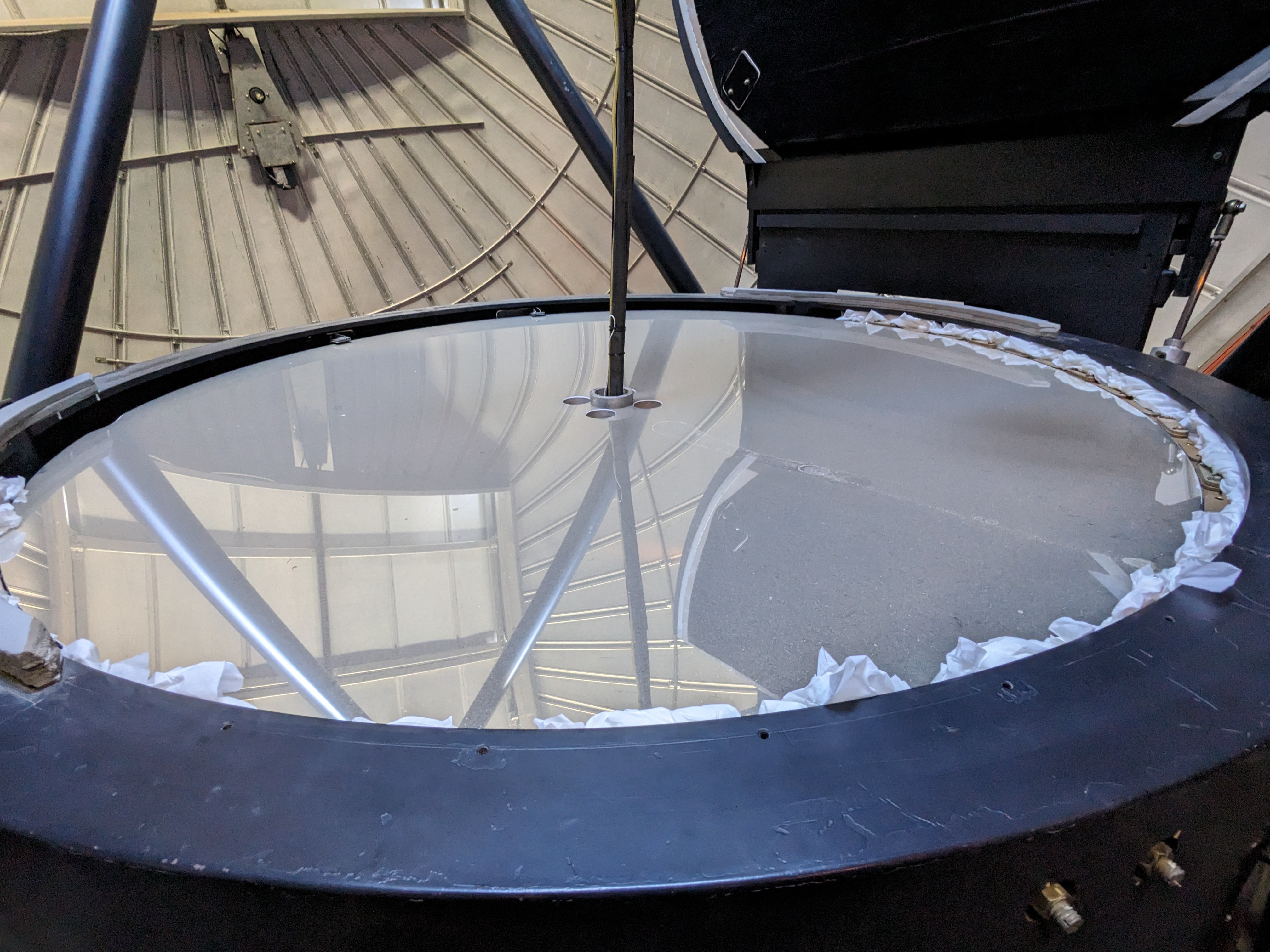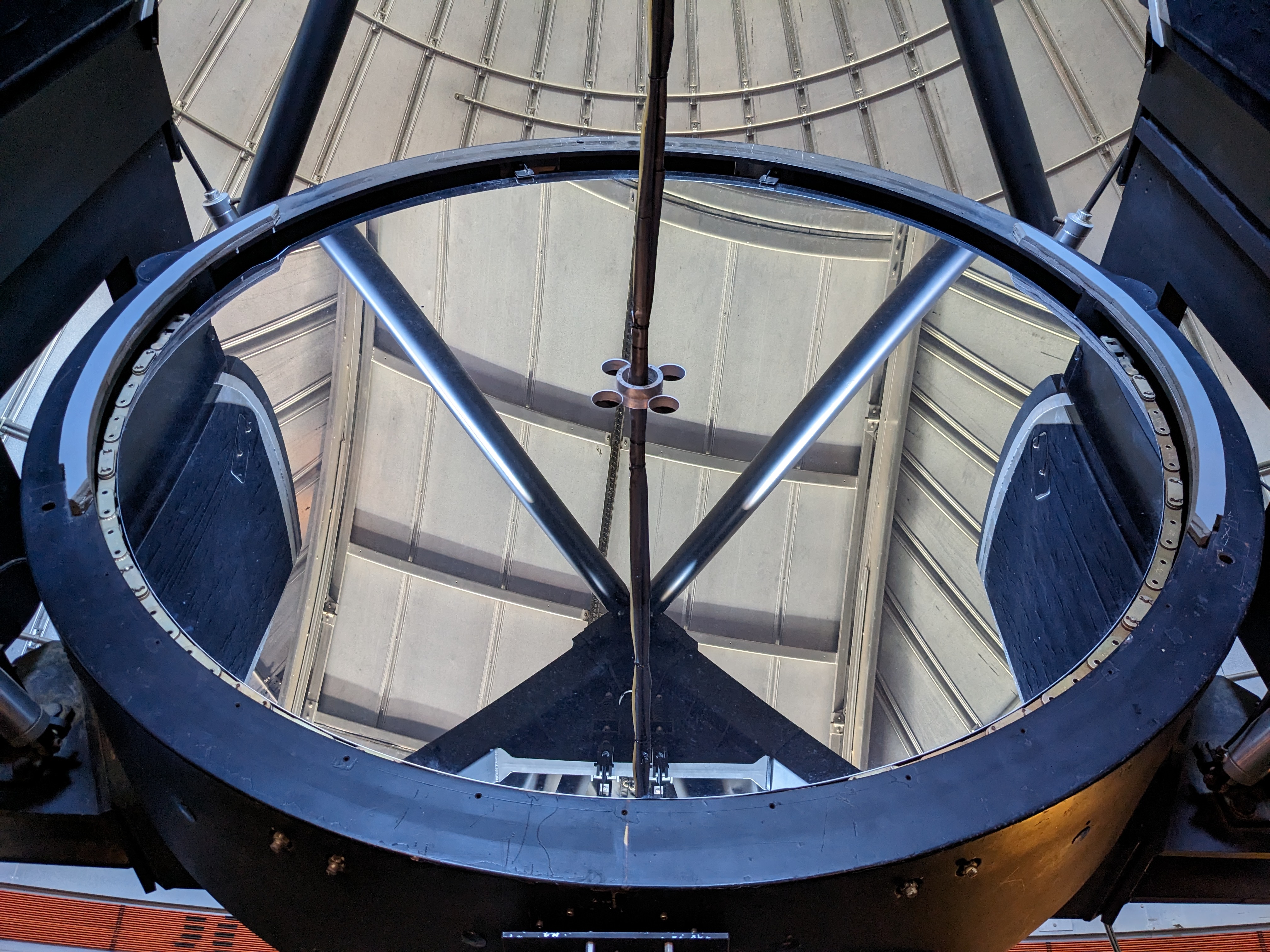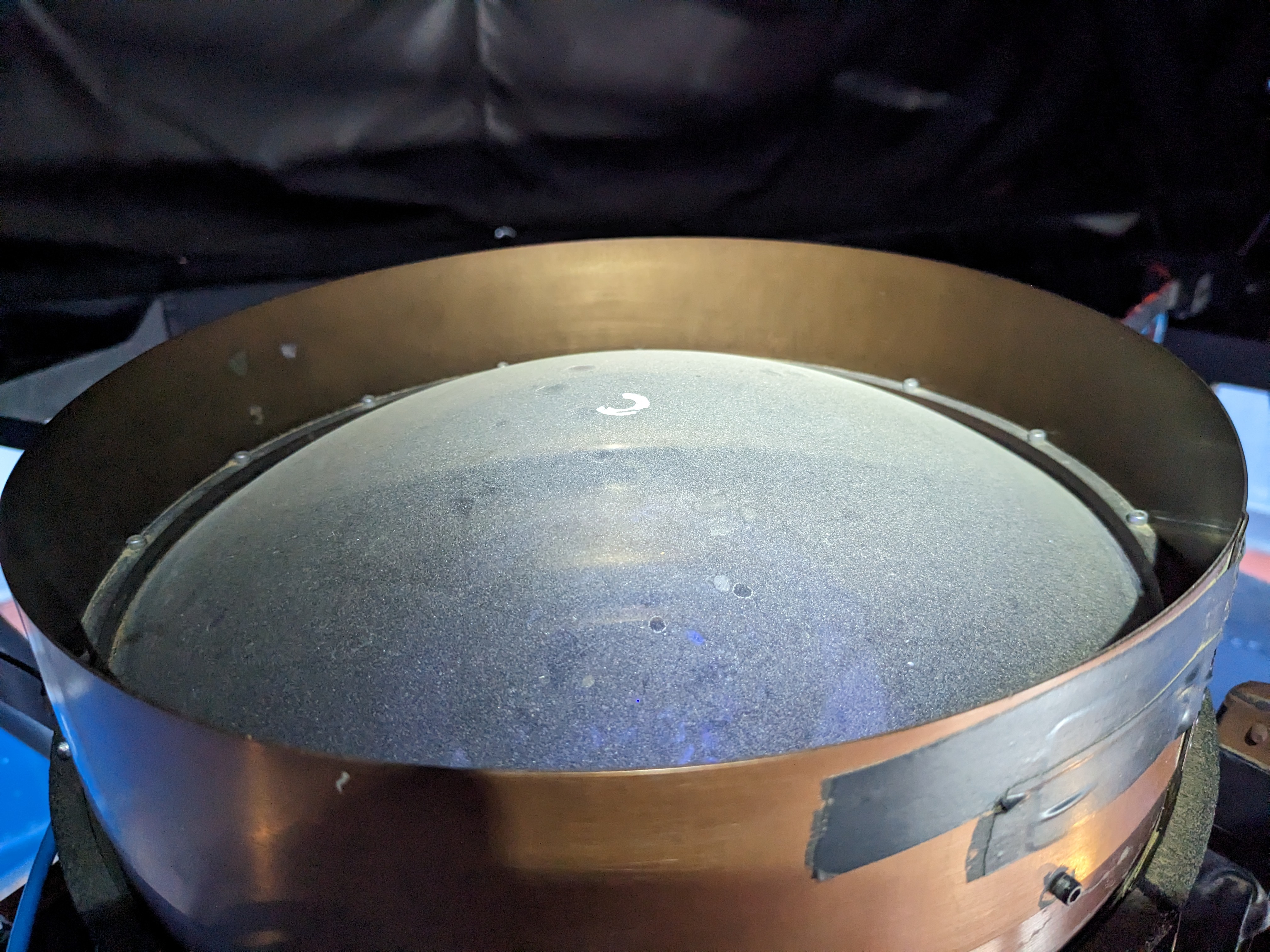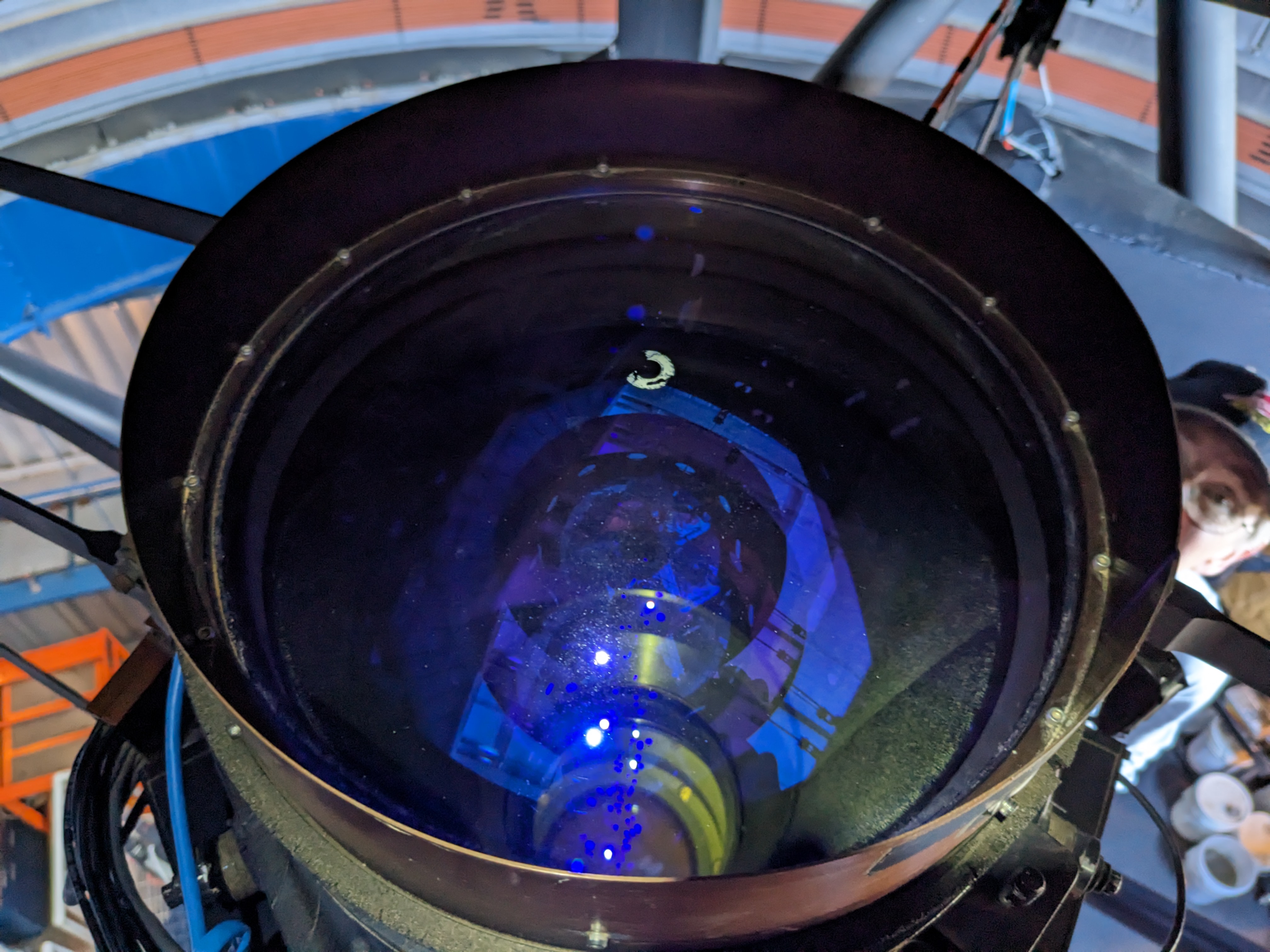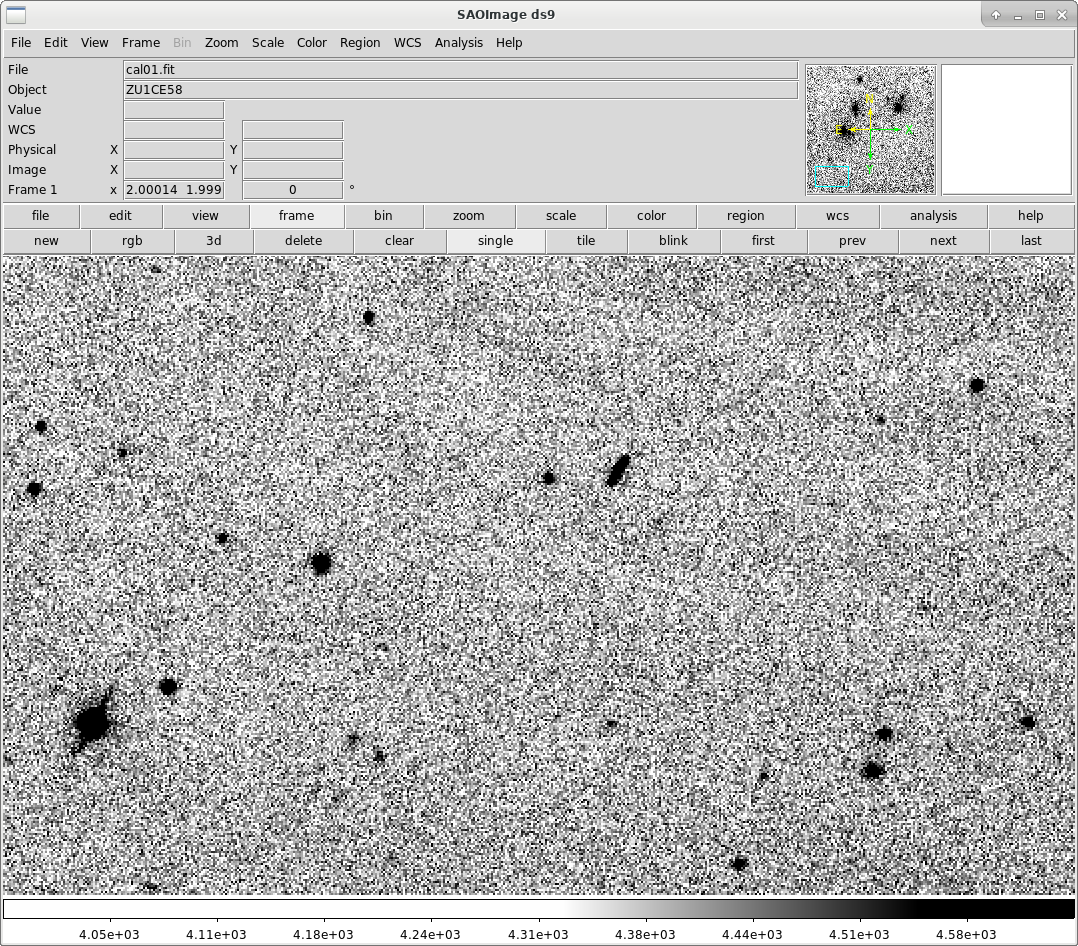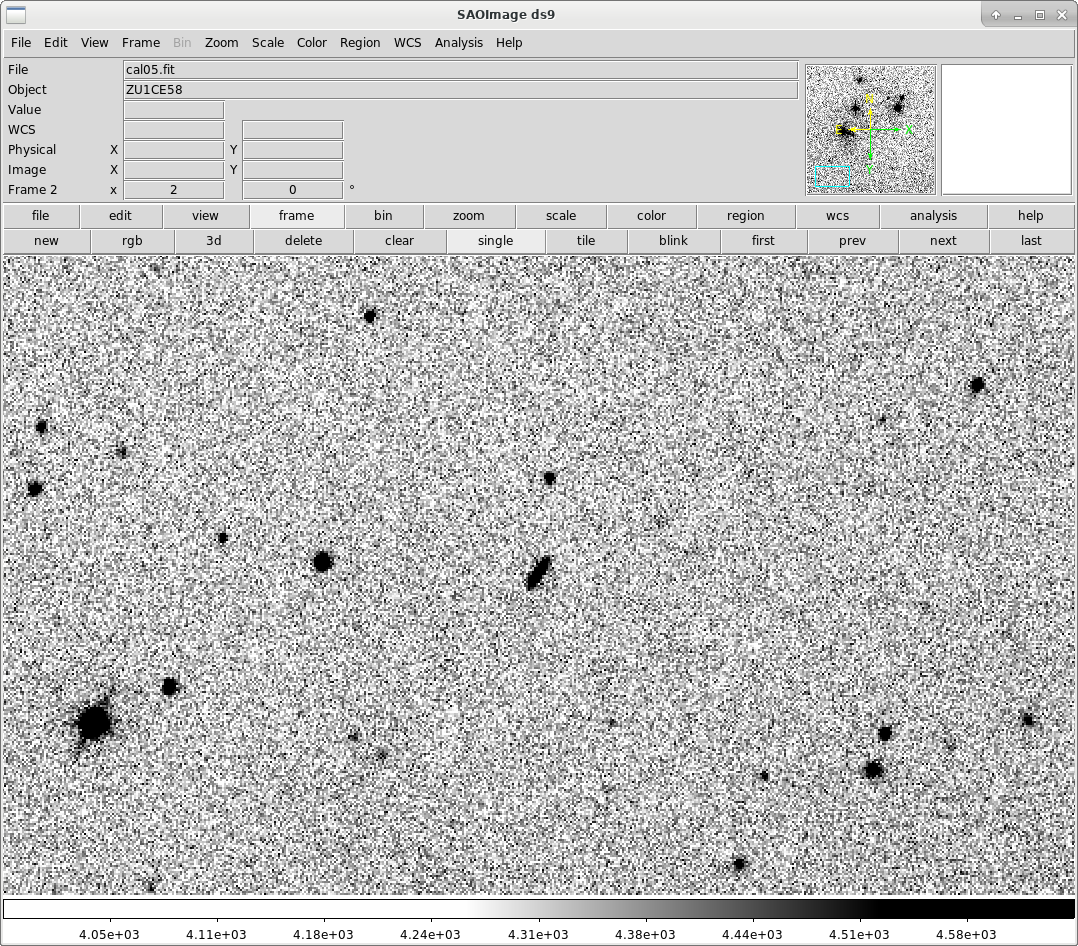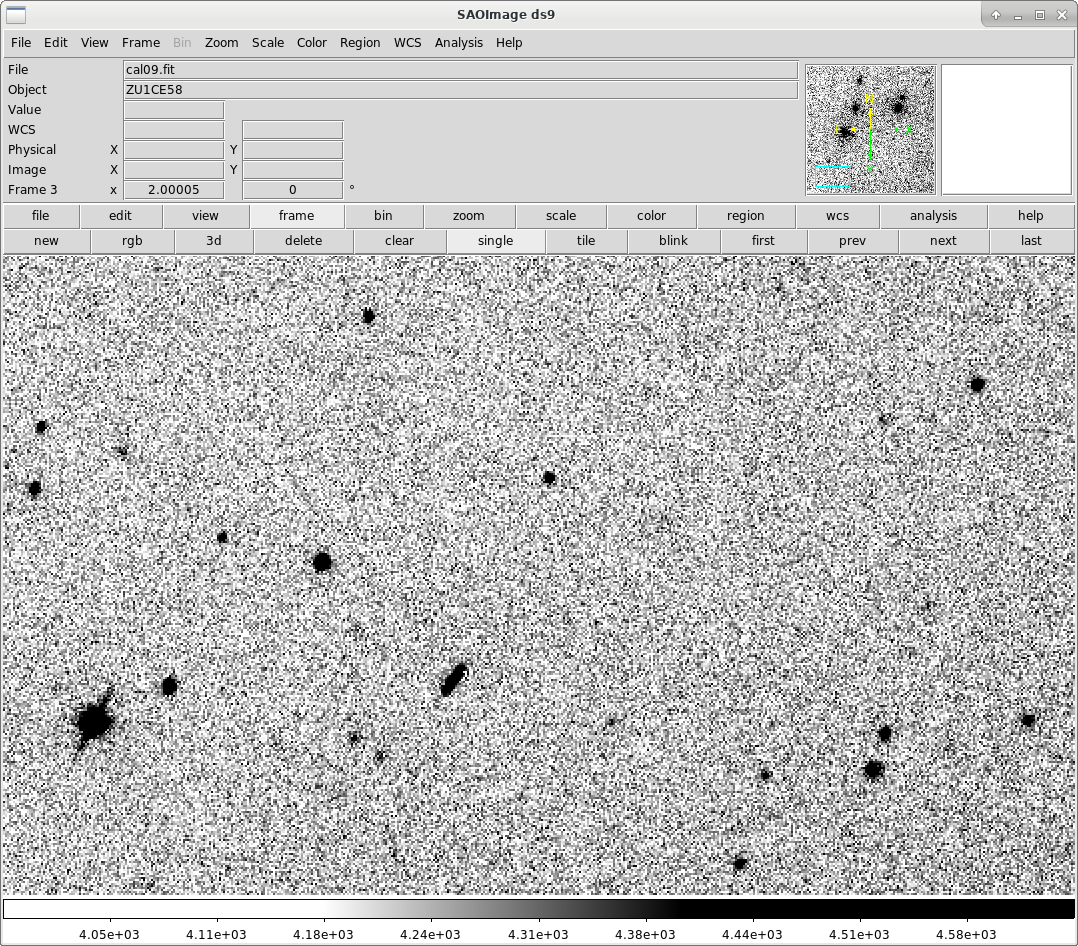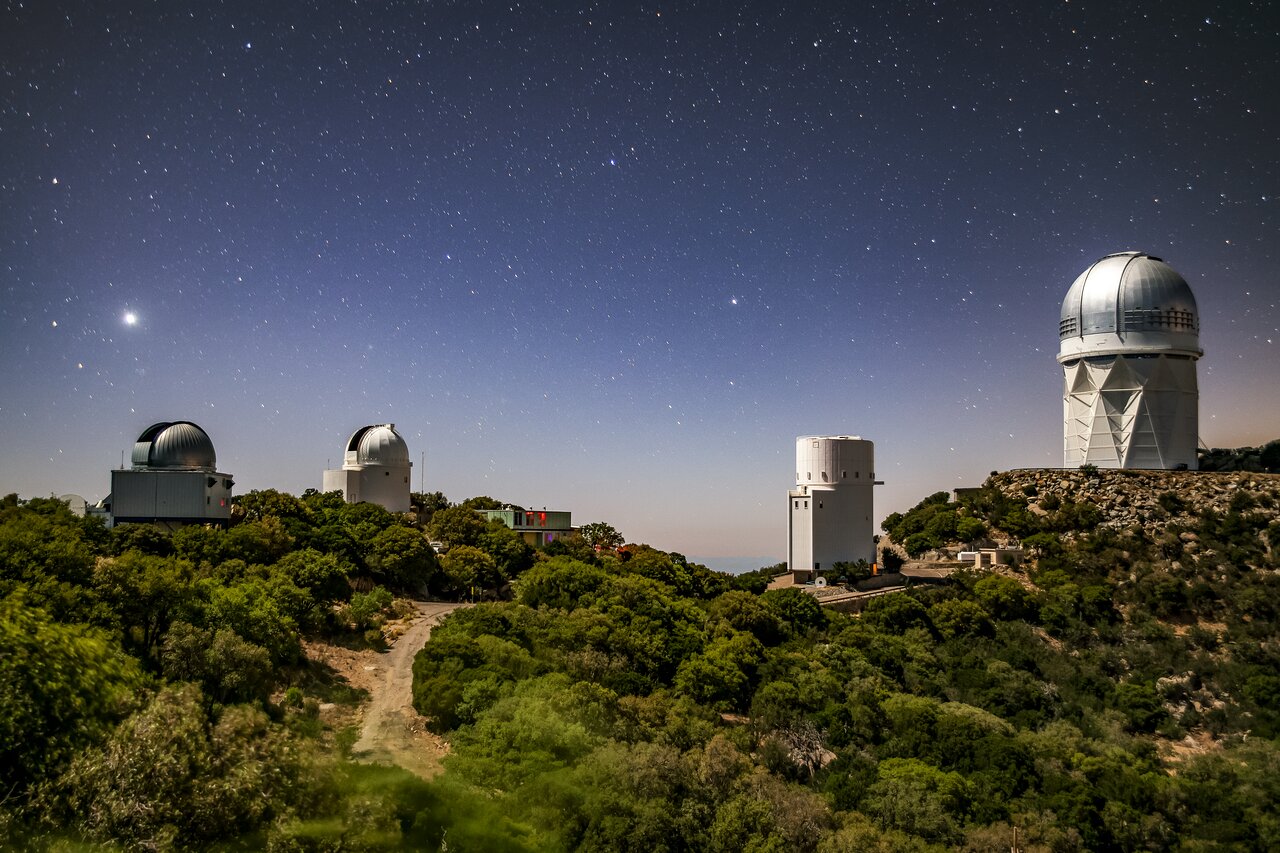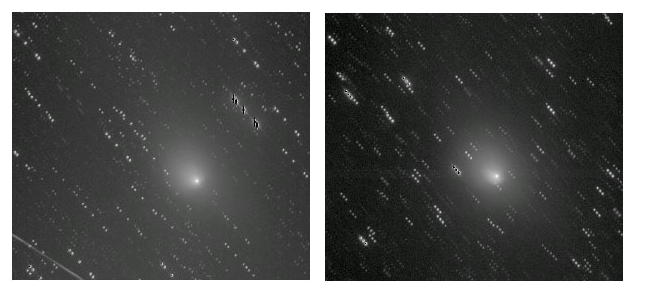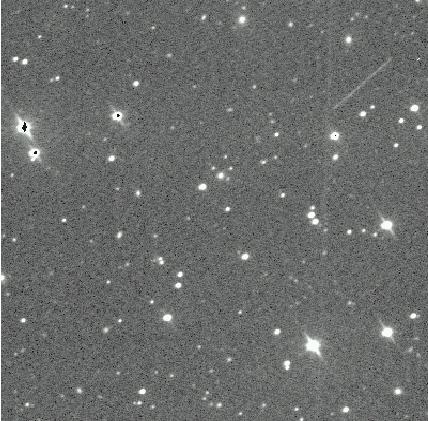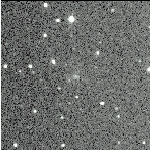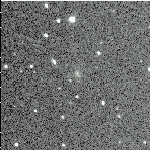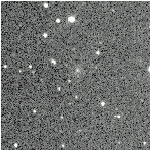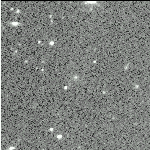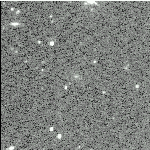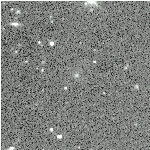2025 Apr 16: NASA Science Mission Directorate's video documentary entitled "Planetary Defenders" covers all aspects of the campaign to protect Earth from the impacts of asteroids: https://youtu.be/jOb2DQWvDvc (1h 15m duration)
2025 Feb 25: Re. minor planet 2024 YR4: Follow-up observations have largely retired any chance of impact in 2032.
2025 Feb 1: Our recent results from 2024 Apr 20 - 2025 Jan 31:
/sites/spacewatch.lpl.arizona.edu/files/MPEC_stats.pdf
/sites/spacewatch.lpl.arizona.edu/files/UniquePHAsObsByFlavor.pdf
/sites/spacewatch.lpl.arizona.edu/files/UniqueNEAsObsByFlavor.pdf
/sites/spacewatch.lpl.arizona.edu/files/TallyTable.pdf
/sites/spacewatch.lpl.arizona.edu/files/NEA_flavor_table.pdf
2024 Nov 22 UTC: Our astrometric observations are now being sent to the Minor Planet Center in ADES/xml format to provide more information about them and comply with the format preferred by the MPC.
2024 Aug 23: Analysis by Dr. Cassandra Lejoly: How we are doing in follow-up observations of our priority targets: Bar chart flavor 22.5 lead FLAVORS 2019-2023 (PDF)
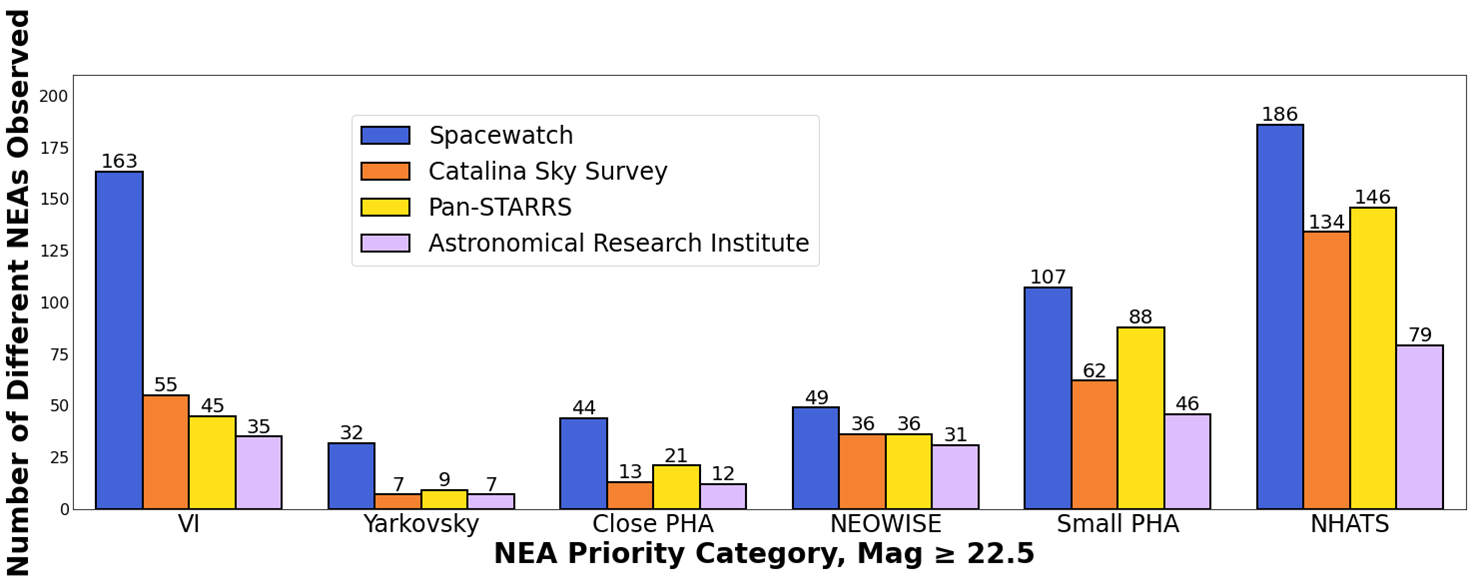
See a detailed explanation of our targeting priorities under "Detections" in the main menu above.
2024 Aug 26: Talk by Dr. Brucker given to the New Jersey Astronomical Association on Aug. 24: SPACEWATCH®: Near-Earth Asteroids and Planetary Defense
2024 Aug 21: Updated list of our MPECs: MPEC list 2001 Dec_19-2024 Aug 21 (PDF)
Also see earlier MPECs listed @ MPEC list 1993 Sep 19-2001 Dec 19 (PDF)
2024 Aug 14: Chief Engineer Mike Read reports progress developing a new camera for the 2.3-meter Bok Telescope of Steward Observatory. We continue observing through the phases of bright moonlight to catch NEOs while most other observing stations go idle. The Bok Telescope is large enough to permit detection of NEOs despite the brightness of the sky. However, during "bright" time the telescope is configured for instruments at the f/9 cassegrain focus where the wide-field f/3 prime focus survey camera "90Prime" is not available. So we use a different camera, the "Spacewatch® Cassegrain Camera", SCC, during bright time. To get a wider field of view, a new camera dubbed SCC-2, is well along in development. Here is the presentation that Mr. Read gave at a workshop at the Lunar and Planetary Laboratory on 2024 Aug 14: SCC-2 Camera Progress-Roadmap (PDF)
2024 Mar 19: TV Broadcast by PBS Station AZPM about the OSIRIS-REx Mission and the Spacewatch Project: All About Asteroids with OSIRIS-REx and SPACEWATCH. The segment about Spacewatch begins at time counter 19:13 and features Dr. Melissa J. Brucker, our Principal Investigator, and Michael T. Read, our Chief Engineer and Observer.
2023 Oct 13: Recovery of a Potentially Hazardous Asteroid (PHA) after more than 10 years: Dr. Melissa Brucker recovered 2012 VO6, a PHA that had not been observed since 2013 Apr 30: https://minorplanetcenter.net/mpec/K23/K23TL3.html . The object was discovered by Pan-STARRS on 2012 Nov 4 and was last observed by them in 2013. Its absolute magnitude H suggests a diameter between 100 and 300 meters. Its orbital path gets as close as 0.026 AU to Earth's orbit, or about 10 times as far as the Moon is from Earth.
2023 Oct 5: Poster presented by Dr. Melissa J. Brucker at the 55th Annual Meeting of the Division of Planetary Sciences of the American Astronomical Society: Brucker DPS EPSC 2023 (PDF)
2023 Oct 3: Here is an example of our observations retiring asteroids from the list of Virtual Impactors (VIs).
2023 TA and 2023 SH5 were removed from the list immediately upon our astrometry being reported.
2023 TA was discovered on 2023 Oct 1 by station K88:
GINOP-KHK, Piszkesteto, Observer K. Sarneczky, 0.60-m Schmidt + CCD,
Orbital elements:
2023 TA Earth MOID = 0.0022 AU
Epoch 2023 Sept. 13.0 TT = JDT 2460200.5 Veres
M 141.20137 (2000.0) P Q
n 1.12915673 Peri. 195.57844 -0.92459601 +0.38083828
a 0.9133416 Node 6.82841 -0.34073941 -0.81597754
e 0.1042356 Incl. 4.43223 -0.17034928 -0.43490557
P 0.87 H 27.97 G 0.15 U 6
Dr. Lejoly's observations are below; they increased the temporal span of the observations by a factor of 2.
COD 691
CON M. J. Brucker, Univ. of Arizona, 1629 E. Univ. Blvd, Tucson AZ 85721
OBS C. Lejoly
MEA C. Lejoly
TEL 0.9-m f/3 reflector + CCD
NET GAIA-DR2
BND R
ACK SW 0.9-m FOLLOWUP: K23T00A
COM Filter = Schott OG-515; bandpass 515-950 nm = V+R+I
COM Measurements made using Astromatic (Ver. 2.23.08.30)
COM Directory: 2023.10.03.004
COM 4 stacked images per pass, 2 second exposure per image
COM Type: NEO (VI), Last Observed: 2023 Oct 2, Uncertainty: 11
COM Seeing: Unk, Ephem mag: 18.8 V
K23T00A KC2023 10 03.09269 21 44 40.35 +29 59 48.9 18.6 R 691
K23T00A KC2023 10 03.09625 21 44 30.24 +29 59 54.1 18.2 R 691
K23T00A KC2023 10 03.09980 21 44 20.18 +29 59 58.8 18.1 R 691
2023 SH5 was discovered on 2023 Sep 19 by station G96:
Mt. Lemmon Survey, Observer J. K. Hogan, 1.5-m reflector+10K CCD.
Orbital elements:
2023 SH5 Earth MOID = 0.2628 AU
Epoch 2023 Sept. 13.0 TT = JDT 2460200.5 Bell
M 0.70126 (2000.0) P Q
n 0.15474943 Peri. 170.86303 +0.98551359 +0.16959528
a 3.4359751 Node 179.37161 -0.15906133 +0.92559964
e 0.6306496 Incl. 3.35167 -0.05884269 +0.33838255
P 6.37 H 23.77 G 0.15 U 9
Andrew Tubbiolo's observations are below; they increased the temporal span of the observations by a factor of 2.8.
COD 695
CON M. J. Brucker, Univ. of Arizona, 1629 E. Univ. Blvd, Tucson AZ 85721
OBS A. F. Tubbiolo
MEA A. F. Tubbiolo
TEL 2.3-m f/9 reflector + CCD
NET GAIA-DR2
ACK Spacewatch/Steward Bok 2.3-m FOLLOWUP: K23S05H
COM CCD = 2048x2048 e2v CCD230-42 thinned, back-illum., BB AR coated
COM Pixels = 15x15 microns = 0.15 arcsec on Steward Observatory 2.3-m telescope
COM Camera = Finger Lakes Instr. ProLine Model PL23042, S/N PL0101015
COM Filter = Tiffen(Wratten) Yellow #12 bandpass 515-950 nm = V+R+I
COM Measurements made using Astrometrica (Ver. 4.11.1.442)
COM Directory: 2023.10.03.04
COM 21 stacked images per pass, 134 second exposure per image
COM Type: VI (VI), Last Observed: 2023 Sept 24, Uncertainty: 45
COM Seeing: Unk, Ephem mag: 22.3 V
K23S05H KC2023 10 03.21999 01 13 58.95 +04 33 23.1 22.1 G 695
K23S05H KC2023 10 03.25336 01 14 01.23 +04 33 15.2 22.1 G 695
2023 Aug 4: Telescope Mirrors & Optics Washed: Because telescopes are necessarily exposed to the air for many hours per year, their optics inevitably accumulate dust over time.
These images show the improvement in optical surface quality at our 1.8-meter telescope following our most recent wet-washing. Similar improvement was obtained for our 0.9-meter telescope. This procedure has to be done very carefully and gently so as not to scratch the optical surfaces.
2023 July 24: Update on our Follow-up Astrometry of Potentially Hazardous Asteroids (PHAs) While they are Faint:
Our stock in trade has been improving knowledge of the orbits of asteroids of high priority. PHAs are minor planets with absolute magnitudes brighter or equal to 22.0, corresponding on average to diameters greater than or equal to 140 meters. That is the range of sizes on which Congress recommended that NASA concentrate. PHAs are also defined by how close their orbits approach that of the Earth. For many years we have led the international community in this category of observations. We have now checked our status in this parameter with a fresh analysis of the observations accepted by the Minor Planet Center. We looked at the time interval that began with our use of the current imaging camera at the cassegrain focus of the Bok 2.3-meter telescope, 2015 Sep 28, and ends with 2023 July 06, the latest date of the MPC's MPCAT-OBS compilation. The attached file shows that we are still the top-ranked astrometry project in the follow-up of PHAs while they are faint. Observing asteroids while they are faint can improve knowledge of their orbits more uniquely than waiting until they get closer to Earth. Faint PHA follow-up 2015 Sep 28-2023 Jul 06 (PDF)
2023 June 29: Development of a New Imaging Camera:
We are testing a new camera for our use at the cassegrain focus of the Bok 2.3-meter telescope. Based on our 2002-vintage mosaic camera on the 0.9-meter telescope, our engineering staff have designed and constructed a liquid nitrogen-cooled two-CCD mosaic camera with a field of view almost double that of our present camera we use on the Bok, at about 9.2 arcmin x 10.3 arcmin. Last night (2023 June 28) our engineers Mike Read and Andrew Tubbiolo achieved a milestone in this development, q. v., the report below:
>From [Bok 2.3-meter Observers] Thu Jun 29 04:41:33 2023
>Date: Thu, 29 Jun 2023 11:40:38 +0000
>Subject: Bok 90-inch Morning Report
>Mike and I got the readout noise beat down to almost match the sky.
>Image quality is improved dramatically and we were able to recover
>objects visually down to V 21.6 with no image processing. None.
>Raw images with no massaging applied. We could not have done this
>except on the telescope. A huge jump towards operational status.
>We were able to expose for up to 10 minutes with nice clean images
>resulting. Just an excellent night. Thanks for the engineering time.
>
>- Mike & Andrew>
>Target: Type: E-Mag(V)
>P21GHXL CP 21.6
Effectiveness of Our Follow-up Observations:
2023 June 13: How many of our tracklets are unique for the night?
Another way of expressing the value of our follow-up observations of NEOs is to look @ whether the tracklets we report for NEOs are unique on the given objects within the nights they were made. We have analyzed all these statistics for the interval 2019 Nov 15 -2023 Feb 15, i.e., "19W-23C" in "MPC-speak" for short.
In that interval there are 7382 so-defined unique tracklets by site codes 291+691+695+V00, of which about 80% are ones without V00 included.
Of the total number of observations we made of NEOs plus comets in 19W-23C, *not counting V00*, 88% were unique for the given objects on the given date.
There are caveats and inaccuracies in these stats because we used MPECs to do the counts, and MPECs sometimes make links to old data which may appear to be unique within the new MPEC and aren't really overall.
But the 88% number can't be too far off, and because we don't produce much incidental detections, most of our data are on targeted objects. So hardly anybody gets the same targeted objects on the same nights that we do.
How many of our tracklets are the enablers of new MPECs?
Assume that the last tracklet listed in an MPEC is that which completed the required span of observations to justify the MPEC.
Here we analyze Minor Planet Electronic Circulars (MPECs) containing observations by Spacewatch®. The answer below is that 25.5% of the MPECs in which we appear contain one of our tracklets as the final "enabling" one for the MPEC.
Date range analyzed: 2010 June 7 - 2023 June 12, encompassing the time when we began using the 2.3-meter Bok telescope in addition to ours.
Total of 9914 MPECs processed.
Parameter
No. MPECs w/ Spacewatch®= 9563 where "Spacewatch®" = CODs 291,691,^695,& D695.
No. MPECs w/ V00 = 711
No. MPECs w/ SpW last = 2439 = 25.5%
No. SpW obs. in total = 115733
No. V00 obs. in total = 6888
Avg H value = 22.617 mag
Avg U value = 7.18
Avg Min elong. = 127.30 deg. ("Elongation:" is the angle between the point of observation and the Sun.)
Min elong. by SpW = 36.80 deg.
Min SpW elong. in MPEC 2018-A17
Avg SpW Faintest mag = 21.374 mag
Faintest SpW mag = 25.400 mag
Faintest SpW mag in MPEC 2014-B51
Avg V00 Faintest mag = 22.197 mag
Faintest V00 mag = 24.310 mag
Avg Span in days = 61.11 days
Avg EMOID = 0.1127 AU
Avg Min Lunar phase = 91.383 deg.
Avg resid sigma (x,y) = (0.3075, 0.2944) arcsec
Statistics include rejected observations.
2023 May 15: NASA's JWST space telescope detected water outgassing from main belt Comet P/2005 U1 = 238P (Read): NASA’s Webb Finds Water, and a New Mystery, in Rare Main Belt Comet and Spectroscopic identification of water emission from a main-belt comet (PDF). Comet P/2005 U1 = 238P (Read) was discovered on 2005 Oct 24 by Spacewatch® observer Michael T. Read. Here is our original discovery image sequence:
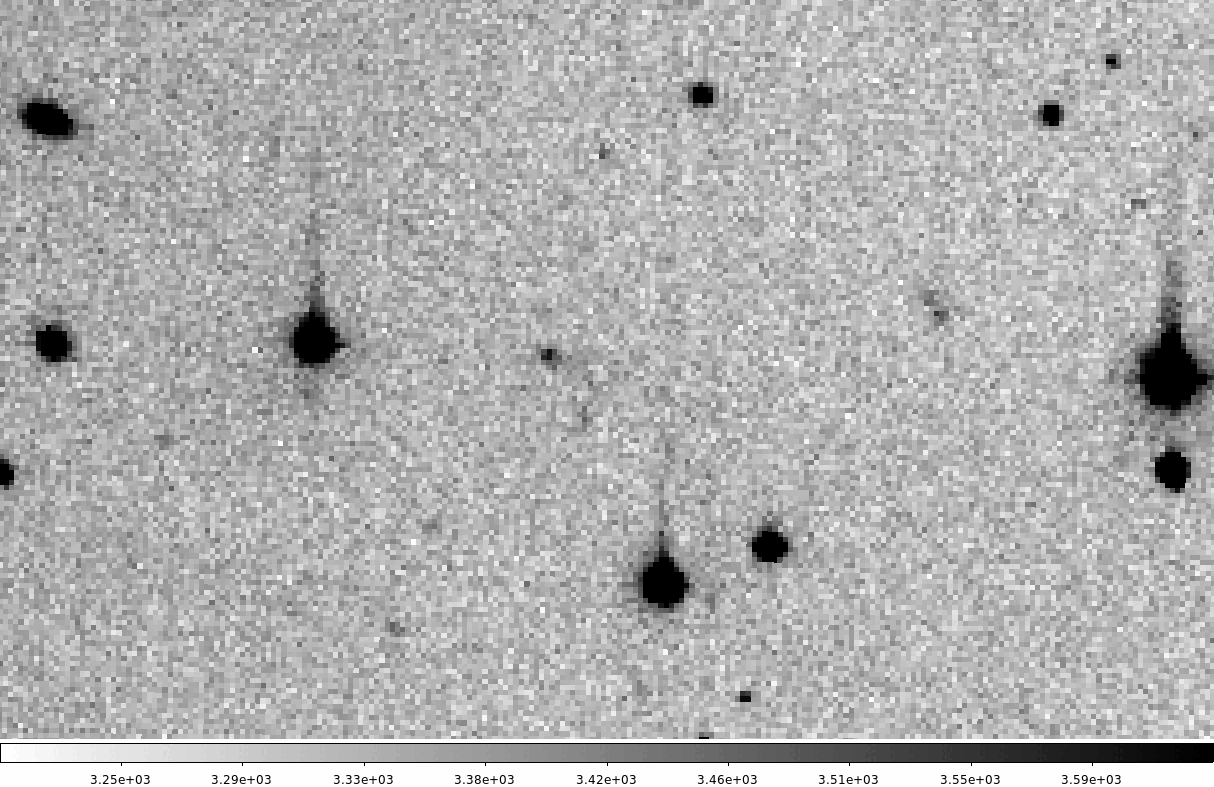
2023 May 6 was the 40th anniversary of the first detection of an asteroid's motion with a CCD. It was (110) Lydia revealed by simple image subtraction, before any image motion software had been developed. The observers were T. Gehrels, R. S. McMillan, J. V. Scotti, J. E. Frecker, and M. L. Perry at the 0.9-meter telescope of the Steward Observatory with an RCA 320x512 CCD at the f/5 Newtonian focus. A video that was presented to the Division of Planetary Sciences of the American Astronomical Society in 1983 has been converted to *.mp4 format and will soon be made available on this site.
2023 May 1: NEO 2023 GQ2 was retired from the impact risk list. It had temporarily reached Torino scale 1 due to potential impacts. It was discovered on 2023 Apr 12 by station V00, using the Bok 2.3-meter telescope of Steward Observatory as "The Bok NEO Survey", a collaborative survey project between SPACEWATCH®, Catalina Sky Survey, and the University of Minnesota. A follow-up astrometric image sequence made by SPACEWATCH® on 2023 Apr 27 is here:
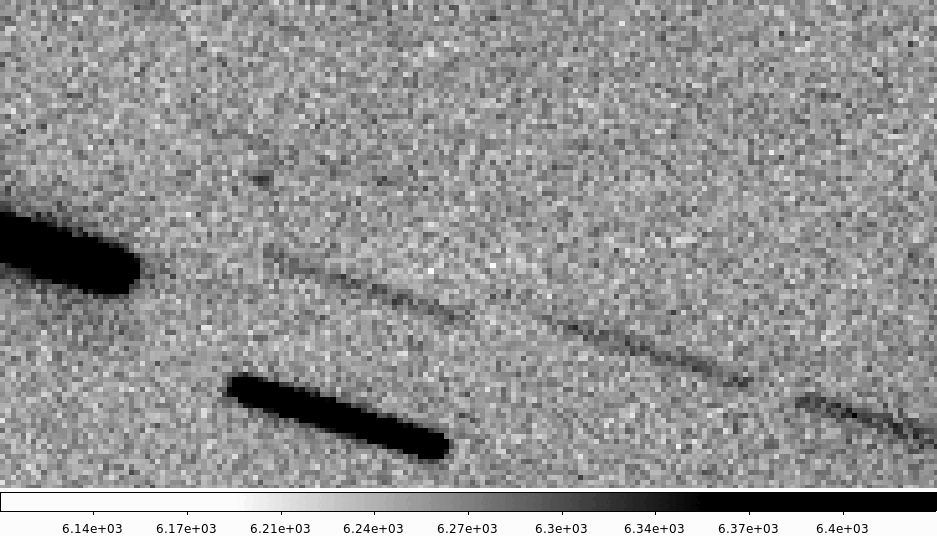
2023 GQ2 was discovered at a greater distance and fainter magnitude than most NEOs are, thanks to the larger aperture of the Bok telescope. Otherwise it might have gone undetected for many more years.
100th Anniversary of Steward Observatory's 36-inch Telescope
Spacewatch Observing Schedule to 2023 Apr 13 (PDF)
2022 Dec 8: Operations on Kitt Peak are back to normal: Commercial line power and high-speed fiber optic internet service have been restored. Observations are proceeding normally.
2022 Oct 9 - Nov 5: Images by SPACEWATCH® of the Didymos/Dimorphos system after the DART impact, showing the plume of debris emanating from the target:
The Didymos system on 2022 Oct 9 as viewed with the SPACEWATCH® Cassegrain Camera on the Steward Observatory 2.3m Bok Telescope by Jim Scotti:
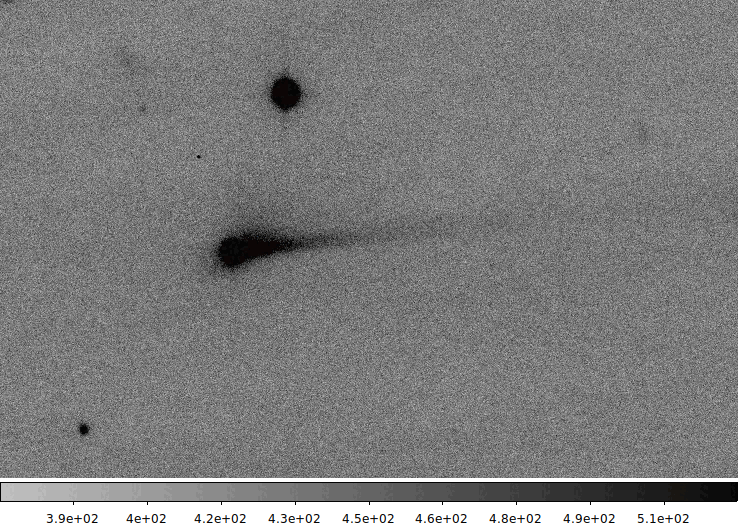
The Didymos system on 2022 Oct 17 as viewed with the 0.9m by Andrew Tubbiolo:
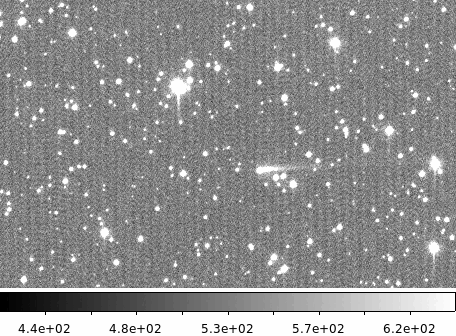
The Didymos system on 2022 Nov 5 as viewed with the 0.9m by Melissa Brucker:

2022 Oct 19: Video about SPACEWATCH® and the Catalina Sky Survey: "Eyes on the Sky: Spacewatch and the Catalina Sky Survey"
2022 Oct 14: U. Arizona news release about SPACEWATCH®'s contribution to the DART asteroid impact mission: "University of Arizona asteroid hunters celebrate success of DART mission"
2022 Sep 15: Video by Dr. Melissa Brucker about our discovery of Minor Planet Didymos:
NASA Asteroid Watch on Twitter
On 1996 April 11, asteroid Didymos was discovered by @UArizonaLPL's SPACEWATCH® project. Near-Earth Objects (NEOs) like this one are seen as mere moving points of light. The moon of this asteroid was the target of NASA's #DARTMission. Learn more: https://t.co/qsjU2fh2DB pic.twitter.com/shbMTGP48Z
— NASA Asteroid Watch (@AsteroidWatch) 2022 Sept. 9
and a press release by the University of Arizona on the same topic:
2022 Oct 11 et seq.: KPNO Update re. fire recovery. Commercial power is not yet available, so mountain power is running on local generators with reduced reliability. Low-bandwidth internet and phone service are operating intermittently with temporary equipment. Water on-site has been deemed potable and the dormitories are habitable. SPACEWATCH® engineering trial observations on Kitt Peak resumed on Sept. 7 UTC with the Bok 2.3-meter telescope at the cassegrain focus. Astrometry with that telescope began again to be submitted on Sept 12 UTC. On Sept. 14 UTC we resumed submitting astrometry with our 0.9-meter and 1.8-meter telescopes, which the MPC accepted and used. Target-of-Opportunity observations by SPACEWATCH® of high-priority NEOs with non-Kitt Peak large telescopes, and work on software, data processing, and instrument development also continue.
New NASA book about the history of NEO Discovery and Research: A History of Near-Earth Objects Research
2022 July 20: Binary Minor Planet Didymos-Dimorphos Update & Background:
New papers about the object we discovered:
Predictions for the Dynamical States of the Didymos System before and after the Planned DART Impact
Derek C. Richardson et al. 2022 PSJ 3:157
Dynamical Evolution of the Didymos-Dimorphos Binary Asteroid as Rubble Piles following the DART Impact
Harrison F. Agrusa et al. 2022 PSJ 3:158
Background on this interesting object:
1996 April 11: Nearly km-sized Amor asteroid 1996 GT was discovered by Joseph L. Montani while observing for SPACEWATCH® with the 0.9-meter telescope of Steward Observatory on Kitt Peak. The discovery MPEC is MPEC 1996-H02 : 1996 GT and the discovery image sequence compiled by Dr. Melissa Brucker and Prof. Jeff Larsen is below:
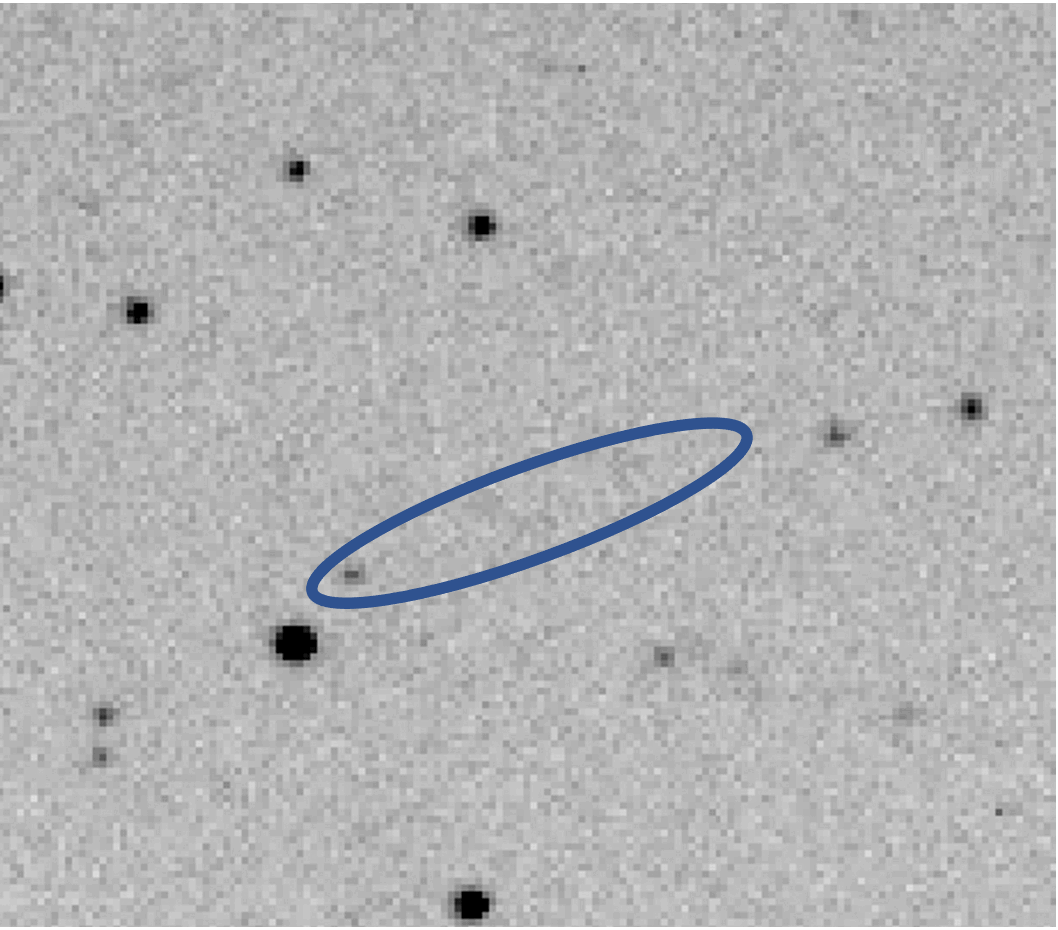
Mr. Montani subsequently nominated "Didymos", meaning "twin" as the name of this minor planet, q. v.: Citation for (65803) because it was later found by radar and optical rotational lightcurve to be binary.
More recently the smaller companion, "Dimorphos", of this binary system was targeted for impact by a spacecraft to practice deflection against a potential impact of a future as-yet-unknown asteroid onto the Earth: Double Asteroid Redirection Test (DART). This NASA-led international Double Asteroid Redirection Test (DART) mission sent an impactor onto the companion to modify its orbit around Didymos. The impact occurred on 2022 Sept 26, after which the primary spacecraft and Earth-based observatories will measure the effect of the impact on Dimorphos' orbit.
Instrument History
Spacewatch® Instrument History: Spacewatch apparatus epochs 240619 (PDF)
History of SPACEWATCH® 0.9-meter Telescope (PDF)
History of the SPACEWATCH® 1.8-meter Telescope (PDF)
Timeline and Milestones
Tallies of Observations, 1984 May 01 - 2022 Apr 14
2022 March: SPACEWATCH® Observing Status (PDF)
2022 Feb 17: 2003-2016 Mosaic Survey Data now online
2022 Feb 1: Cassandra Lejoly, PhD Joined SPACEWATCH®:
Dr. Cassandra Lejoly, PhD, an expert on comets and telescopic observing, joined SPACEWATCH® on 2022 February 1 as an Observer and Data Analyst. She recently completed her PhD in the Department of Planetary Sciences at the University of Arizona. Because SPACEWATCH® now uses several telescopes of widely different properties, an additional observer familiar with observing small bodies in the solar system is greatly appreciated.
Practice Observing a Potential Impactor
2021 Nov. 7 UT: Observer Andrew Tubbiolo reached R magnitude 23.7, exceptionally faint for our 1.8-meter telescope, to recover Virtual Impactor asteroid 2021 UK2. This object, discovered on 2021 Oct. 27 by D. C. Fuls of the Mt. Lemmon Sky Survey, has been designated a Virtual Impactor by NEODyS. As of 2021 Dec 8 it is shown to have a very small probability of a very close approach to Earth in the year 2082 and 17 more potential encounters in the subsequent 40 years. Such predictions tend to be retired after additional observations allow improvement of knowledge of objects' orbits. Because 2021 UK2 is presently receding away from Earth and getting dimmer, further observations are not possible until its next apparition years from now. Tubbiolo's observations were used by the MPC and posted in Minor Planet Electronic Circular 2021-V123 on 2021 Nov. 7. They show how effective our 1.8-meter telescope can be when the observing conditions are favorable. His observations are shown below:
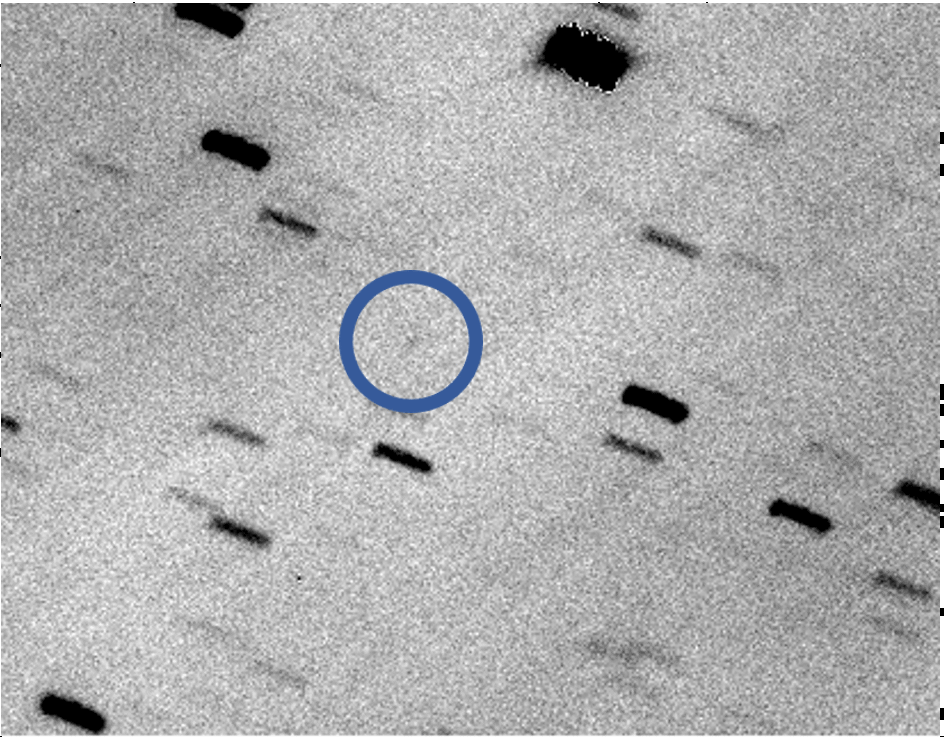
Figure caption: Animated view of three cumulative passes of images of asteroid 2021 UK2 taken on 2021 Nov 7 by A. F. Tubbiolo with the SPACEWATCH® 1.8-meter telescope. The J2000 coordinates are approximately: RA: 02 03 13.8 to 02 03 31.2, Dec: +10 04 40 to +10 07 59. Each of the images of the moving object is the result of sixteen exposures of 160 seconds each. Thus each image is the result of 2560 seconds of exposure time. The images were shifted and stacked at the expected angular sky rate of the target which was 22 arcseconds per hour at the time, so the images of non-moving stars are trailed. This cropped and zoomed frame is 200x200 arcseconds in size. Reverse contrast is used to aid visibility.
COD 291
CON M. J. Brucker, Univ. of Arizona, 1629 E. Univ. Blvd, Tucson AZ 85721
OBS A. F. Tubbiolo
MEA A. F. Tubbiolo
TEL 1.8-m f/2.7 reflector + CCD
NET USNO-B1.0
BND R
ACK SW 1.8-m FOLLOWUP: K21U02K
COM CCD = 2048x2048 Fairchild 3041 thinned, back-illum., BB AR coated
COM Pixels are 15x15 microns = 0.62 arcsec on SPACEWATCH® 1.8-m telescope
COM Camera = Finger Lakes Instr. ProLine Model PL3041-LC, S/N PL0144010
COM Filter = Schott OG-515; bandpass 515-950 nm = V+R+I
COM Measurements made using Astromatic (Ver. 2.21.10.02)
COM Directory: 2021.11.07.07
COM 16 stacked images per pass, 160 second exposure per image
COM Type: VI (VI), Last Observed: 2021 Nov 5, Uncertainty: 2
COM Seeing: 2.3", Ephem mag: 23.5 V
K21U02K KC2021 11 07.27162 02 03 23.59 +10 06 26.6 23.6 RoEV123291
K21U02K KC2021 11 07.30212 02 03 22.58 +10 06 20.5 oEV123291
K21U02K KC2021 11 07.33265 02 03 21.58 +10 06 13.8 23.8 RoEV123291
2021 Feb 24: Dr. Melissa J. Brucker, PhD, formerly the Deputy PI, became the Principal Investigator of SPACEWATCH®, succeeding R. S. McMillan who served as PI since 1997.
Near-Earth Asteroid (66391) 1999 KW4 Observing Campaign in 2019
SPACEWATCH® contributed photometric time series observations in May and June 2019 to help refine knowledge of this binary asteroid that made a close approach to Earth in May 2019. The purpose of this international study was to practice against the prospect of an imminent impact by an asteroid that might be discovered in the future.
Near-Earth Asteroid 1998 VS is a candidate to reveal the Yarkovsky Effect
Detecting the Yarkovsky effect among near-Earth asteroids from astrometric data. Del Vigna, A. et al. 2018. Astronomy & Astrophysics, Volume 617, id.A61.
This Near-Earth Asteroid was discovered in 1998 by the LINEAR survey and followed for one month. But by 2003, five years later, it had not been re-observed and was in danger of becoming lost. SPACEWATCH® observers Anne S. Descour and Arianna E. Gleason recovered 1998 VS with the SPACEWATCH® 1.8-meter telescope (MPC site code 291) in 2003, 5 years after it had been last observed and had acquired a long uncertainty line of variation. Without that, it may have remained lost and would never have become a Yarkovsky candidate when again re-observed in March 2019, this time by site code T12, the 2.2-meter telescope on Mauna Kea, Hawaii.
Highlights of SPACEWATCH® Observations in 2018
2018 October 19: The Close Approach of Small Asteroid 2018 UA.
This episode illustrates how well the asteroid observing community communicates and coordinates observations of potentially dangerous asteroids. 2018 UA was discovered and originally designated as ZU1CE58 by Gregory J. Leonard of the Catalina Sky Survey on 2018 Oct 19 at 03:59 UT with the 0.68-m Schmidt telescope and a 10Kx10K CCD (IAU/MPC site code 703). Their discovery was promptly posted on the Minor Planet Center's (MPC's) Near-Earth Object Confirmation Page. The NASA/JPL Center for NEO Studies also promptly computed initial very approximate possible trajectories that included potential impacts on Earth within hours and a size potentially as large as 200 meters. But that computed orbit at the time of discovery was necessarily so uncertain that it was not even clear whether it was geocentric or heliocentric.
Worsening weather at the Catalina Mountains prompted the discoverers' request for additional follow-up observations by other stations. The object was moving fast and could have been lost before a sufficiently accurate orbit could have been determined. SPACEWATCH® was in operation at the time and responded with additional observations of the object's trajectory with both the 0.9-meter and 1.8-meter telescopes.
Examples of SPACEWATCH® images of 2018 UA taken with the 1.8-meter telescope on 2018 Oct 19 at 08:27 UTC are illustrated below:
The exposure time of each image was 30 seconds. This zoomed-in field illustrated is 3.2 x 5 arcminutes. These three images out of a total of 9 are separated at intervals of 92 seconds. The trailed nature of the images of the asteroid and their separation illustrate the speed of the object across the sky, which was 18 arcseconds per minute at the time.
Because the MPC's initial predictions were necessarily approximate, the asteroid's rate deviated from them, accelerating faster than expected. SPACEWATCH® was still able to recover the object because of the prompt timing of response to the request. The MPC used these observations to update their prediction of the path on the sky, allowing another observer, Masayuki Suzuki in Japan, to observe it again 2 hours later remotely with the Q62 0.5-meter iTelescope in Siding Spring, Australia.
As a result of these recoveries of 2018 UA, the MPC was able to issue Minor Planet Electronic Circular 2018-U19, designating the object as 2018 UA and providing approximate post-encounter orbital elements. That designation is assigned automatically according to a prearranged calendric sequence; it is only a coincidence that "UA" also is short for the University of Arizona.
The revised estimate of the object's size is now between 3 and 6 meters in diameter, depending on how reflective its surface is. A graphical representation of its encounter trajectory is available.
At the time of closest approach to Earth, the sky plane angular rate had increased to 3.3 degrees per minute due to its close distance of only 1.1 Earth radii from the surface of the Earth. Close approach occurred on Oct 19 at 14:52 UT over the south Pacific; that event was not observed. The object then receded off into the distance and into daylight, likely not to return to the vicinity of Earth for many years, if at all. In fact, it is not listed as a potential impactor within the next 100 years. Without the prompt communication and follow-up observations, 2018 UA may have remained on the list of potential impactors for the indefinite future.
Another treatment of this event is in the latest European Space Agency's Space Situational Awareness Newsletter.
2018 September 19: Melissa J. Brucker, PhD is designated as the Deputy Principal Investigator of the SPACEWATCH® Project.
2018 May 22: Great moonlit night view showing both SPACEWATCH® telescope domes open. Credit: Marilyn Chung/Lawrence Berkeley National Lab/KPNO/NOIRLab/NSF/AURA Our observer on that night was Mike Read:
2018 April 25: Minor Planet 2017 TA6, a Near-Earth Asteroid approximately 11-24 meters in diameter, was discovered by the Catalina Sky Survey on 2017 Oct 15 and listed by NASA/JPL as a potential ("Virtual") Impactor (VI). It therefore required additional observations to refine the predictions of its trajectory with respect to Earth during its future return apparitions. However, it had receded from Earth after discovery and had become too faint for most telescopes commonly used for astrometric measurements of asteroids. Fortunately, however, it was targeted and recovered by SPACEWATCH® with the 4-meter Blanco telescope at the Cerro Tololo Interamerican Observatory in Chile on 2018 Apr 25 at apparent V magnitude 24.5. It was retired from the impact risk list as a result of the astrometric measurements thus obtained. This recovery represents SPACEWATCH®'s new emphasis on using large telescopes to observe VIs that have become too dim for most telescopes used for follow-up astrometry.
2017 October 21-26: SPACEWATCH® contributed astrometric observations to help refine knowledge of the orbit of the first object to be discovered entering our solar system from interstellar space in an unbound hyperbolic orbit. The interstellar object was A/2017 U1 = `Oumuamua. See JPL's "Small Asteroid or Comet 'Visits' from Beyond the Solar System" article for more information.
2017 August-September: SPACEWATCH® provided astrometry and lightcurve photometry of small, closely-approaching NEO 2012 TC4 which was the subject of a world-wide observing campaign: See the 2012 TC4 Observing Campaign.
2017 January: Specific targeting is now the only way we use the 0.9-m telescope; we have retired the pre-arranged survey mode pattern.
2016 October: Scotti, J. V., and R. S. McMillan. 2016. Discovery and Follow-up Observations of Small, Low Delta-V Apollo Asteroid. "Low Delta-V" means that a spacecraft would not need a large velocity impulse to visit this asteroid. This is because its orbit plane is nearly aligned with that of Earth, its orbital semimajor axis is similar to that of Earth, and its orbit is nearly circular. And unlike some small asteroids, this one, as of 2017 September, is not considered lost.
MPEC T88: 2016 TB18 [a=1.08,e=0.08,i=1.5,H=25.2] M.P.E.C. 2016-T88 Issued 2016 Oct. 9, 11:43 UT
MPEC 2016-T88 : 2016 TB18
Status as of 2016 May 30:
In 2011 we installed a new CCD on our 1.8-meter telescope that allows us to observe 50% more objects per unit time with half the astrometric
residual as before. The current annual average number of detections of NEOs by SPACEWATCH® is ~2,900, in which one "detection" consists usually
of a complete "tracklet" of three measurements of position. (Statistics of our observations quoted here are from the MPC's "MPCAT-OBS" file of late April 2016.) That statistic does not include our many observations contributing to the vetting and removal of candidates posted on the MPC's Confirmation Page (NEOCP) that turn out not to be NEOs. SPACEWATCH® has observed three quarters of all known PHAs. SPACEWATCH® also follows up accessible NEOs listed by JPL or NEODyS with potential impact solutions, contributing to the removal of half of such objects
that were retired from that list. Per year we observe about 35 radar targets, 50 NEOs that were measured by NEOWISE, and 100 potential rendezvous destinations. In the last 3 years we have observed half of all NEOs and PHAs observed by anyone in that time.
Observing with non-SPACEWATCH® Telescopes: We used the 4-meter Mayall Telescope of the Kitt Peak National Observatory (KPNO), the 3.5-m WIYN telescope on Kitt Peak, the 4-m Blanco telescope of the Cerro Tololo Interamerican Observatory (CTIO) in Chile, and the 2.3-meter Bok Telescope of Steward Observatory on Kitt Peak to reach fainter targets. The Bok Telescope is equipped with the 90Prime
Camera (Williams et al. 2004; which we used until 2015 October) and the Mayall 4-m also has a mosaic of CCDs (Sawyer et al. 2010). SPACEWATCH® reported astrometry of many NEOs discovered or detected by WISE, including the notable Earth Trojan 2010 TK7 that we arranged to be observed with the Blanco 4-m telescope at CTIO. After a long search we found the faint almost-lost "Virtual Impactor" (VI) 2011 BY24 discovered by WISE.
Priority Targets for the Bok 2.3-meter Telescope: MPC's NEO Confirmation Page: Freshly discovered objects on the NEOCP,
especially those discovered by surveys such as Pan-STARRS that cannot do their own followup, are our first priority on each night of observing.
In 2015 October we began changing operation of the 0.9-m telescope from a prearranged survey pattern to targeting specific NEOs, and as of 2017 January, specific targeting is the only way we use the 0.9-m telescope. Most recently, we have implemented stacking of mosaic images with the 0.9-m telescope to reach fainter objects, as we have been doing for years with the 1.8-m telescope. At both telescopes we are now tuning our exposure times more carefully according to the seeing conditions to maintain sufficient precision of astrometry in degrading conditions. More accurate measurements of objects’ rates across the sky are now achieved by cycling repeatedly through a series of targets to spread the measurements of each object over longer time intervals.
2015 September 27: Our new ProLine® PL23042 CCD camera system from Finger Lakes Instruments saw first light on the Bok 2.3-meter telescope of Steward Observatory. Installation of the new camera and use of our own targeting software and data processing pipeline has resulted in an average increase of 50% in targeted objects per night and a 300% increase in the number of images taken per night, compared with our previous use of the institutional camera and software. In addition to increasing our observing efficiency at the 2.3-m telescope, the new camera and targeting software have normalized many aspects of our observing procedures, image analysis efforts, logging tasks and archiving procedures with those procedures at SPACEWATCH®'s 0.9-m and 1.8-m recovery operations.
In 2012 August to October, SPACEWATCH® obtained a lightcurve of the horseshoe-orbiting Aten asteroid (3753) Cruithne (Larsen et al. 2014) at the request of the NEOWISE team who had determined its diameter. Its rotation period was close to one day and its frequently low solar elongation made it available for only an hour or two each morning. So it took 10 weeks to accumulate an acceptable lightcurve, which telescope time would have been difficult to obtain through a competitive allocation process.
Larsen, J. A., et al. 2014. The Lightcurve of 3753 Cruithne. The Minor Planet Bulletin (ISSN 1052-8091). Bulletin of the Minor Planets Section of the Association of Lunar and Planetary Observers, Vol. 41, No. 2, pp. 68-69: 2014MPBu...41...68L.
2011 November 23: McMillan, R. S., and J. V. Scotti. 2011. Discovery and Follow-up Observations of Large Apollo Asteroid 2011 WO41.
MPEC W54: 2011 WO41 [a=1.89,e=0.63,i=19.8,H=16.8] M.P.E.C. 2011-W54 Issued 2011 Nov. 26, 13:18 UT: MPEC 2011-W54 : 2011 WO41
2011 November 7: UA News article on the return of Minor Planet 2005 YU55 that was discovered by SPACEWATCH® in 2005: "Close Encounter of the Rocky Kind" .
2011 Oct 10: We replaced the 1992-vintage imaging CCD detector on our 1.8-meter telescope with a thinned, back-illuminated, antireflection-coated CCD of 2048x2048 pixels cooled thermoelectrically with circulating antifreeze fluid as a heat sink. The smaller pixels of 0.6 arcsec as projected on the sky, and the superior flatness of the new CCD immediately yielded astrometry a factor of two more precise than before. Faster readout also allows more observations per night by use of “staring” exposures at the sidereal rate rather than the drift scanning that the slowly reading CCDs of the early 1990s required. The thermoelectric cooling system brings the detector down to operating temperature in tens of minutes, compared to the 8 4hours it took to cool down the old detector. This allows us to become operational more quickly after electrical storms clear.
2011 May 21 to June 9 - 2011 KP36 was designated by Scotti as SW40m2 on 2011 June 9 and later found in prediscovery mosaic images from May 21 and May 25. This object was singled out due to its very slow motion, indicating it was likely an outer solar system object. MPEC 2011-L56. announced its discovery with preliminary orbital elements a=51.49 AU, e=0.91, q=4.78 AU, i=19 degrees and H=9.4.
In 2010, SPACEWATCH® became the pre-eminent astrometric follow-up station targeting NEOs freshly discovered by the NEOWISE spacecraft (Nugent et al. 2015).
2010 Jun 15 - SPACEWATCH® observed an object recovered by WISE which shows a well-developed tail. 237P/2010 L2 (LINEAR) = 2002 LN13 was re-discovered/recovered by the orbiting WISE satellite. At initial discovery, it was the apparently asteroidal object 2002 LN13 (discovered then by LINEAR). R. S. McMillan used the SPACEWATCH® 1.8-m telescope on 2010 Jun 15 to comfirm the cometary nature of the object as indicated by WISE. The composite image was assembled by J. V. Scotti. The shifted and co-added comet image has 418 seconds effective exposure, and the stars have 139 seconds exposure. The narrow tail can be seen to extend almost 3 arc minutes toward the WSW. In the image, North is at the top, and East to the left. Once displayed, click on the image to reverse the view from negative to positive, and vice versa.
2010 April 29: Minor Planet 2005 YU55 discovered by SPACEWATCH® in 2005 has been observed by radar: "Potentially Dangerous Asteroid Spotted Passing Earth" - Space.com.
2010 Feb 8 - SPACEWATCH® observed the first comet discovered by the WISE spacecraft, P/2010 B2. The images were taken by J. V. Scotti on 2010 Feb 8 at 11:14:00, 11:19:41, and 11:25:02 UTC with the SPACEWATCH® 1.8-m telescope on Kitt Peak (in these negative views, the comet is the fuzzy object near the center of each frame). Each pass has a FOV of 3.27 arcmin N-S and 3.08 arcmin E-W. East is up and North is to the right due to the way we scroll drift scans on the screen. Effective exposure time of the drift scanning at this declination is 141 sec. As the drift scanning is synchronized to the sidereal rate, the stars are round and the comet is trailed slightly.
2010 Feb 1 - SPACEWATCH® observers T. H. Bressi and J. V. Scotti carried out successful ground-based targeted follow-up observations of Potentially Hazardous Apollo Asteroid 2010 CO1, the first PHA discovered by the WISE Spacecraft.
2010 Jan 8 - SPACEWATCH® observes main-belt Comet C/2010 A2 (LINEAR), and finds it remarkably free of a central condensation. The object may be a comet that has had an outburst, or it could be a rare instance of an asteroid that has undergone an impact recently, with impact debris and dust still traveling along with it and forming a tail in its path. Stacked and shifted exposures were made as a composite by J. V. Scotti at the SPACEWATCH® 1.8-m telescope on 2010 Jan 8, and show the cometary aspect as well as the puzzling lack of nucleus.
2009 Dec 14 - present: Collaboration with the WISE Mission: R. S. McMillan is a co-investigator in the Wide-field Infrared Survey Explorer (WISE) spacecraft mission, which was launched on 2009 Dec 14.
From 2009 Dec 27 through 2010 Jan 15 McMillan participated in WISE initial checkout operations to help measure the relative alignment of the spacecraft attitude determination and control system with respect to the scientific imaging detectors. The spacecraft checked out well and began detecting asteroids and comets soon after.
SPACEWATCH® will recover and follow interesting solar system objects discovered by WISE. On 2010 Jan 12-15 UT SPACEWATCH® made the first ground-based recoveries of three asteroids discovered by WISE by observing them with the SPACEWATCH® 1.8-meter telescope. Our recoveries made it possible for the Minor Planet Center to designate them W00016c = ts579 = 2010 AX58, W000e2t = ts582 = 2010 BD, and W000prw = ts580 = 2010 AO61, all main belt asteroids. Followup of WISE discoveries will continue throughout the mission and afterwards as conditions permit.
2009 - Several papers and presentations of SPACEWATCH® results, SPACEWATCH® collaborations with the WISE spacecraft mission, and with NEO surveys, have been published.
Haskell, H, and J. Larsen. 2009. "The Size Distribution of the Small Near Earth Asteroids from SPACEWATCH®". AAS Meeting #213, #401.11; poster abstract.
McMillan, R. S., A. K. Mainzer, R. G. Walker, E. L. Wright, P. R. Eisenhardt, R. M. Cutri, T. Grav, and the WISE Science Team. 2009. "NEOWISE: Proposed Discovery of Near-Earth Objects in the Infrared by the WISE Mission". AAS Meeting #213, #459.06.; abstract, and McMillan et. al. 2009 WISE AAS213 poster (PDF).
McMillan, R. S. 2009. "SPACEWATCH® Support of Deep Wide-Field NEO Surveys (PDF)"; White Paper submitted to NRC Committee to Review Near-Earth Object Surveys and Hazard Mitigation Strategies, and PDF format Powerpoint slide series (PDF) to accompany presentation to the Committee on 2009 April 20.
McMillan, R. S., et al. 2009. Abstract of Talk for 214th Meeting of the American Astronomical Society (DOC), 2009 June 9, Presentation No. 217.02, and slides of Talk for 214th Meeting of the AAS (PDF).
2009 June 19: IAU Circular 9053 announces that (136617) 1994 CC, a SPACEWATCH® PHA discovered on 1994 Feb. 3 by Jim Scotti with the 0.9-m telescope, is a triple system, consisting of a 650 m diameter primary, and two satellites of at least 50 m and 100 m diameters. The satellites were discovered with Goldstone and Arecibo planetary radars, and optical photometry by the PROMPT telescopes on 2009 June 3 shows an eclipse/occultation event.
2009 May 26: Large Amor asteroid 2009 KM7 discovered with SPACEWATCH® 0.9-m Mosaic telescope by Jim Scotti, and followed up by Terry Bressi with the SPACEWATCH® 1.8-m telescope. This object, with H magnitude 17.9, is between 0.7 - 1.6 km in diameter.
2009 Jan 2: Recovery of large, highly eccentric, steeply inclined Apollo Asteroid 2000 YJ29 (as 2009 AO), with SPACEWATCH® 0.9-m Mosaic telescope by Jim Scotti. The object, with H magnitude 17.9, is between 0.7 - 1.6 km in diameter.
2008 Sept 4: - Large Amor asteroid 2008 RJ1 discovered with SPACEWATCH® 0.9-m Mosaic telescope. The object is between 0.7 - 1.6 km in diameter.
2008 Jan 30: Unusual object 2008 BN18 discovered with SPACEWATCH® 0.9-m Mosaic telescope. When observable again after emerging from the Sun's glare in 2008 Nov., this object may show itself to be cometary, as hinted at by its eccentric orbit over 0.92, and semi-major axis over 34 AU.
2007 Nov 1: Comet C/2007 VO53 (SPACEWATCH®) discovered with SPACEWATCH® 0.9-m Mosaic telescope, due for perihelion in 2010 (about Apr 27); inclination of the comet's orbit is 87 degrees.
2007 April: Bressi, T. H. 2007. Discovery and Followup of Large Apollo Asteroid 2007 HA59. MPEC H58: 2007 HA59 [a=2.48,e=0.70,i=76.4,H=14.6]
M.P.E.C. 2007-H58 Issued 2007 Apr. 26, 16:09 UT MPEC 2007-H58 : 2007 HA59 .
2006 Dec 27: Conversion of SPACEWATCH® astrometry to the U. S. Naval Observatory's B1.0 reference star catalog has improved astrometric residuals on reference stars from 0.3 to 0.2 arcseconds.
2006 Sept.: Scotti, J. V., and T. H. Bressi. 2006. Discovery and Followup Observations of Large Apollo Asteroid 2006 SP134. MPEC S80: 2006 SP134 [a=2.09,e=0.75,i=13.6,H=16.7] M.P.E.C. 2006-S80 Issued 2006 Sept. 28, 22:06 UT MPEC 2006-S80 : 2006 SP134 .
2006 April 7: Retrograde Outer Solar System Object discovered by SPACEWATCH® 0.9-m Mosaic telescope: a Comet! Bressi, T. H., and T. Gehrels. 2006. Discovery and Followup Observations of Retrograde Outer Solar System Object 2006 GZ2. This turned out to be a comet (P/2006 GZ2 (SPACEWATCH®); IAUC 8703), as its orbit suggested. In MPEC 2006-G38.
2006 March 4: Dual-scope operations: Automation has made it possible for the 0.9-meter telescope to run unattended and monitored by the observer at the 1.8-meter. This mode of solo observer operation of both telescopes was first used on 2006 January 8 UT and has been standard practice since 2006 March 4 UT.
2006 January 7: First Discovery of a Large Transneptunian Object with our Collaborators at the U. S. Naval Academy in archived SPACEWATCH® data.
2006 January 5: Read, M. T., and T. H. Bressi. 2006. Discovery and Followup Observations of Large Apollo Asteroid 2006 AO3. MPEC A33: 2006 AO3 [a=1.90,e=0.53,i=36.2,H=16.6] M.P.E.C. 2006-A33 Issued 2006 Jan. 8, 16:53 UT MPEC 2006-A33 : 2006 AO3 .
2006 Jan.7: Larsen, J. A., E. A. Roe, J. V. Scotti, A. F. Tubbiolo, M. Block, A. S. Descour, R. S. McMillan, M. T. Read, T. H. Bressi. 2006. Discovery, Prediscovery, and Incidental Followup Observations of Large Trans-Neptunian Object 2003 MW12, the first discovery of a Kuiper-Belt Object by the search at the United States Naval Academy. In MPEC 2006-A28.
2005 Dec 28: Discovery of small Apollo asteroid 2005 YU55 with 59 close approaches in 70 upcoming years: McMillan, R. S., and J. V. Scotti. 2005. Discovery and Followup Observations of Small Apollo Asteroid 2005 YU55. This object, while not initially labeled a PHA by the MPC, turned out to have 59 potential encounters with Earth between 2036 and 2105. In MPEC 2005-Y47.
2005 Oct 31: McMillan, R. S. 2005. Discovery of Large Amor Asteroid 2005 UP156.
MPEC 2005-V11: 2005 UP156 [a=2.23,e=0.53,i=4.7,H=16.6] Issued 2005 Nov. 2, 14:34 UT
https://www.minorplanetcenter.net/mpec/K05/K05V11.html
2005 Oct 29: SPACEWATCH® discovers a Main-Belt Comet. Read, M. T., M. Block, T. H. Bressi, T. Gehrels, J. V. Scotti. 2005. Discovery and Followup Observations of Comet P/2005 U1 (Read). In MPEC 2005-U74. This is one of only a few comets with orbits similar to those of main-belt asteroids. See "Comets Posing as Asteroids Might be Source of Earth’s Water" on Space.com. Discovery image sequence is here: /sites/spacewatch.lpl.arizona.edu/files/2023-05/238P_Read_discovery_2005Oct24.gif
2005 Oct 12: SPACEWATCH® Discovers a small, fast-moving Aten "VI" with 24 close approaches in 64 upcoming years. Block, M., R. Gorelli, and T. H. Bressi. 2005. Discovery and Followup Observations of Small, Fast-Moving Aten Asteroid 2005 TH50. This H=28.0 Virtual Impactor (VI) has 24 potential encounters with Earth between 2031 and 2094. In MPEC 2005-T85.
2005 Oct 12: SPACEWATCH® Discovers a small, fast-moving Apollo with 3 close approaches in 74 upcoming years. Bressi, T. H., J. J. Gomez, M. Block. 2005. Discovery and Followup Observations of Small, Fast, Closely-approaching Apollo Asteroid 2005 TK50. This H=29.1 VI has 3 potential encounters with Earth between 2027 and 2100. In MPEC 2005-T87.
2005 July 11: Discovery of Apollo PHA with 85 close approaches in 92 upcoming years. Block, M., and E. P. Majden. 2005. Discovery and Followup Observations of Potentially Hazardous, Fast-moving Apollo Asteroid 2005 NX55. This H=21.9 VI has 85 potential encounters with Earth between 2011 and 2102. In MPEC 2005-N64.
2005 July 5: SPACEWATCH® images of 9P/Tempel 1:
Copyright 2005 by the Arizona Board of Regents.
The image on the left was obtained on 2005 July 4 by James V. Scotti using the SPACEWATCH® 1.8-m telescope in drift scan mode in the hours before the impact of the Deep Impact Spacecraft. Five images were co-added giving an effective exposure time of about 694 seconds. The comet has not changed significantly since the previous night. North is to the right and west at the bottom and the field of view is about 12.6 arcminutes N-S and 11.2 arcminutes E-W.
The image on the right was obtained on 2005 July 5 by Miwa Block using the SPACEWATCH® 1.8-m telescope in drift scan mode. Three images were co-added by James V. Scotti, giving an effective exposure time of about 416 seconds. Superimposed on the fan shaped coma and towards the west is an arc or shell of material that exploded from the Deep Impact spacecraft impact crater. North is to the right and west at the bottom and the field of view is about 12.6 arcminutes N-S and 11.2 arcminutes E-W. Here is a median combined version of the same three images.
2005 February 05: PHA, "Lost" for 15 Years, Recovered by SPACEWATCH®. Recovery of Large, Potentially Hazardous Apollo Asteroid 1990 SM which allowed linkage to 1987 SB4. This H=16.2 PHA was uncertain by 90 degrees of arc after not being observed for 15 years, but the search pattern and strategy developed by M. Block, A. S. Descour, and J. V. Scotti found the object seven degrees from the nominal ephemeris prediction. The object was running early in its orbit by 90 days. In MPEC 2005-C25.
2004 Dec 27: Possibility of an Earth Impact in 2029 Ruled Out for Asteroid 2004 MN4: Possibility of an Earth Impact in 2029 Ruled Out for Asteroid 2004 MN4
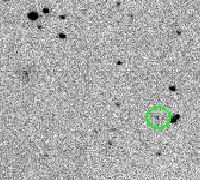
Animation

Pass1

Pass2

Pass3
Copyright 2004 by the Arizona Board of Regents.
Three prediscovery images of the Potentially Hazardous Aten Asteroid 2004 MN4 made by the SPACEWATCH® Project on 2004 March 15. The observer was Arianna E. Gleason; the images were found and measured by Anne S. Descour and Jeffrey A. Larsen. At the time of observation, the object's rate of motion produced trailing of 5 arcseconds during the 2 minute exposure times that were spaced approximately 40 minutes apart in time. This trailing, combined with variations in seeing and background noise, make these faint images less uniform and distinct than those of brighter stars in the same image. Field shown is 128x128 arcseconds with north at the top and east on the left.
MPEC 2004-Y70. Descour, A. S., and J. A. Larsen. Prediscovery Observations of Potentially Hazardous Virtual Impactor Aten Asteroid 2004 MN4. In MPEC 2004-Y70.
2004 March 1: FMO Project: First Recovery of a PHA by a volunteer
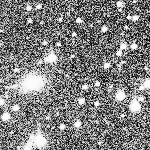
Three positions within frame (short timeline)
Peter Lake of Melbourne, Australia submitted the above FMO candidate which is 2000 EV70, a PHA last seen 2000 April 23. The SPACEWATCH® mosaic system, with its large field of view, was used for this deliberate recovery as 2000 EV70's position was highly uncertain. 2000 EV70 received an orbital adjustment in MPEC 2004-E11 based on our initial recovery measurements and follow-up measurements by another telescope.
2004 January 20: FMO Project Milestone: First Designation of a FMO discovered by a volunteer
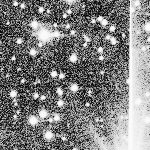
Only 1 position within frame (regular timeline)
For more details, please see "Online SPACEWATCH® Volunteer Discovers Close-Approaching Asteroid" on UA News.
2003 October 25: FMO Project Milestone: First Recoverable FMO.
Vishnu Reddy, a FMO Project Reviewer, submitted the following 12 deg/day FMO on 2003 Oct 25. The three passes with the FMO in the center of each are below:

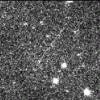
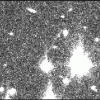
Mr. Reddy is a graduate student in the University of Dakota's Space Studies program. He has been averaging 40 image reviews per night. Unfortunately, this FMO was discovered more than 8 hours after the original images were acquired, so same night follow-up was not possible. An object moving at these rates needs to be recovered within 4-6 hours or it will likely become lost. SPACEWATCH® appreciates the efforts of Mr. Reddy and the many other FMO Project reviewers - we wish you all many future successes! (Note: As of late 2016, Mr. Reddy is now Professor Reddy at the University of Arizona's Lunar and Planetary Laboratory with an office just down the hall from our SPACEWATCH® group.)
2003 September 30: Unveiling of the FMO Project volunteer website. Through a generous contribution from the Paul G. Allen Charitable Foundation, SPACEWATCH® has introduced a volunteer program for finding fast moving objects in our mosaic imagery taken with the Kitt Peak 0.9m telescope. While the website has been available on a limited experimental basis for some time, we just opened the volunteer program to the public after the 2003 autumn equinox, the start of high season for asteroid detection. Please see the SPACEWATCH® FMO Project page for more details.
2003 September 20: Minor Planet 2003 SW130 smallest-yet SPACEWATCH® asteroid designated by MPC. On Sept 22, SPACEWATCH® object ts272 was given the official designation of 2003 SW130. A preliminary orbit calculated by the Minor Planet Center [MPC] suggested this SPACEWATCH® object was only 0.005 astronomical units [AU] (750,000km) from the Earth at the time of discovery, or about twice the distance from the Earth to the Moon. 2003 SW130's closest approach actually occurred the night before, Sept. 19 when it flew by at a distance of only 162,000 km, or less than half the distance to the Moon! As the smallest asteroid detected by SPACEWATCH® and designated by the MPC, its estimated size is between 5 - 9 meters in diameter, calculated as a function its absolute magnitude (H = 29.2). An object of this size poses no threat to the Earth, despite its close proximity on Sept 19. If the orbit were ever perturbed, predicting an impact with the Earth, it would probably disintegrate in the Earth's upper-atmosphere appearing as 'shooting-stars'. Small pieces of the asteroid might also fall to the ground as meteorites. It has been roughly calculated that objects of this size (about 5 meters) impact somewhere on the Earth's surface once each month! These are the largest objects a person could expect to see as a brilliant shooting-star in a lifetime. Although the smaller objects such as 2003 SW130 are not hazardous, the statistics of their population provide information about the processes of fragmentation and cohesion of asteroids due to their mutual collisions and gravitation, respectively.
2003 June 7: Comet C/2003 L1 (Scotti) discovered by J. V. Scotti. See also the discovery image and the discovery MPEC.
2003 March 8: Discovery and Followup of Amor Asteroid 2003 EN16. In MPEC 2003-E38. Amor Asteroid 2003 EN16 becomes the first NEO discovered with the SPACEWATCH® Mosaic of CCDs.
2003 January 10 - Comet C/2003 A2 discovered by A. E. Gleason.
2002 - Photo Gallery of the 0.9-meter telescope conversion.
2002 October 23: First Observation of an NEO with the Mosaic. On the second night of testing the CCD mosaic in bright moonlight, the focus and collimation were already so good that we decided to try some real observations. We detected the Potentially Hazardous Asteroid (PHA) 2002 TD66. Software and engineering refinements continue.
2002 Oct. 10: We had First Light on the optical system, and now we have achieved First Light on our new science detector, the Mosaic of CCDs. Focus, tip, and tilt look good. Installation of the new optical system for the mosaic of CCDs was completed, and images of star trails on a small engineering CCD showed good collimation and focus. Tracked "stare" images will be next, after the telescope is balanced with the science detector and the drive system set up again.
2002 September 24: SPACEWATCH® accepts delivery of the Mosaic mirror and conversion of the telescope speeds ahead.
2002: The technically challenging conversion of the 36" telescope to the mosaic of CCDs is completed and observing on that telescope resumed. This conversion will increase the rate of detection of NEOs by seven times compared to the old detector system on the same telescope. CCD mosaic of 37.7 million pixels. See the Photo Gallery detailing the conversion.
2002: SPACEWATCH® was the first to detect the "lost" CONTOUR Spacecraft.
2001: Full size CCD installed on 1.8-meter telescope. First astrometry with the 1.8-meter telescope. SPACEWATCH® detects the WIND spacecraft. Minor Planet 2000 WR106 is named (20000) Varuna by the IAU.
2000 November 28 - Discovery of Varuna (2000 WR106). At 900 kilometers in diameter, Varuna is among the largest Trans-Neptunian objects after the planet Pluto and its satellite Charon.
2000 May 1 - Long-lost asteroid (719) Albert rediscovered by SPACEWATCH®. 2000 January 28 - Discovery of 2000 BF19. This NEO had a potential of colliding with the Earth in 2022.
Images and News Release of SPACEWATCH® discovery of S/1999 J 1 , a new satellite of Jupiter.
SPACEWATCH® discovers new Minor Planet 2000 WR106 = (20000) Varuna, an object in the outer solar system that was temporarily the intrinsically brightest object known
in the Kuiper Belt other than Pluto: MPEC 2000-X02 : 2000 WR106 and 2000MPEC....X...02M.
SPACEWATCH® discovers first designated comet of the 2000s -- C/2000 A1 (Montani), due for perihelion on 2000 June 15 at a distance of 10 AU!)
SPACEWATCH® discovers Near-Earth Asteroid 2000 BF19.
SPACEWATCH® finds the last, then-remaining, "lost" numbered asteroid, (719) Albert.
2000: New estimate of the number of NEOs larger than 1 km in diameter. First light with SPACEWATCH® 1.8-meter telescope. Our first determination of the bright end of the cumulative luminosity function of TNOs. Rediscovery of minor planet (719) Albert. Discovery of the large TNO (20000) Varuna.
1999: Image Motion Package for Asteroids, Comets, and Transneptunians (IMPACT) in operation at the telescope. TNOs discovered in archival data. Found two objects in the outer solar system (1995 SN55 and 1999 TD10) with orbits that are intermediate between those of Centaurs and Scattered Disk Objects.
Berkeley supernova search found a Type Ia supernova at redshift 0.24 using SPACEWATCH® data.
In 1998 we increased our attention to follow-up rather than searching for new objects, to complement the several wide-area surveys that began that year. The SPACEWATCH® 1.8-m telescope (MPC station code 291) was fully dedicated to targeted followup operations by 2003, while SPACEWATCH®'s 0.9-m telescope (MPC station code 691) covered prearranged patterns primarily for incidental follow-up, but also some discoveries.
1998 May 28 - Discovery of 1998 KY26. This NEO had the fastest rotation known for any asteroid at that time. Click above link for the images. MPEC 1998-L02 : 1998 KY26 and 1998IAUC.6935....2O .
1998: Orbital and absolute magnitude distributions of main belt asteroids determined.
1997 December 6 - Discovery of 1997 XF11. SPACEWATCH® discovered an asteroid whose orbit near the Earth's orbit excited controversy in the scientific community
about how to report the probabilities of future potential impacts. Click above link for the images.
J97/J97Y11.html
1998IAUC.6837....1S
1998IAUC.6839....1H
1998IAUC.6879....3Y
1997: SPACEWATCH® 1.8-m telescope dedicated. Estimate of the number of Centaurs from 1992-1995 observations.
1996 December 12 - Discovery of 1996 XB27: As of 2002 July 28, this was the only NEO with a multiple-opposition orbit that had the orbital elements that are most favorable for frequent low deltaV (< 5 km/s) rendezvous by spacecraft (eccentricity less than 0.1, inclination less than 5 degrees, and synodic period less than 5 years).
1996 April 11: Nearly km-sized Amor asteroid 1996 GT was discovered by Joseph L. Montani while observing for SPACEWATCH® with the 0.9-meter telescope of Steward Observatory on Kitt Peak. The discovery MPEC is MPEC 1996-H02 : 1996 GT and the discovery
image sequence compiled by Dr. Melissa Brucker and Prof. Jeff Larsen is below:

Mr. Montani subsequently nominated "Didymos", meaning "twin" as the name of this minor planet, q. v.: Citation for (65803) because it was later found by radar and optical rotational lightcurve to be binary.
More recently the smaller companion, "Dimorphos", of this binary system has been targeted for impact by a spacecraft to practice deflection against a potential impact of a future as-yet-unknown asteroid onto the Earth: Double Asteroid Redirection Test (DART). This NASA-led international Double Asteroid Redirection Test (DART) mission will send an impactor onto the companion to modify its orbit around Didymos. The impact experiment is scheduled for 2022 Sept 26, after which the primary spacecraft and Earth-based observatories will measure the effect of the impact on Dimorphos' orbit.
1995 February 3 - Discovery of 1995 CR.
This object was a FMO, which came close enough to be captured on video in real time at Kitt Peak.
1995: Coma corrector on 0.9-m telescope, scan regions repeated 3 times per month. Discovered the S or C type asteroid with smallest q at the time (1995 CR; 0.120 AU).
1994 December 9 - Discovery of 1994 XM1.
This object was a VFMO. 1994 XM1 came within 105,000 km of the earth - a record close approach.
1994: Scans of uniform length adopted. Detected the closest approach of any asteroid to the Earth (105,000 km; 1994 XM1).
1993 May 21 - Discovery of 1993 KA2.
This NEO passed within 150,000 km of the Earth.
1993: Detected the smallest known asteroid (1993 KA2 with absolute magnitude H=29.2; 4-9 meters diameter). Discovered enhancement in numbers of asteroids smaller than 100 meters.
1992 January 9 - Discovery of (5145) Pholus (1992 AD).
5145 Pholus (1992 AD) has a perihelion just inside Saturn's orbit and aphelion outside Neptune's. Pholus was the second of the Centaurs discovered and eight additional ones have been discovered since by SPACEWATCH®. The second Centaur found by SPACEWATCH® was numbered and named as (7066) Nessus (1993 HA2). Centaur 1995 SN55 is the intrinsically brightest Centaur yet discovered, brighter even than Chiron, the first Centaur ever discovered. The orbits of these bodies are unstable and easily perturbed while passing by the giant planets. Consequently the possibility exists for them to be either ejected from the solar system or nudged towards the inner planets in the future. They may be the direct progenitors of the short-period comets and must be fed from a source region such as the Edgeworth-Kuiper belt or the Oort Cloud.
1992: (5145) Pholus discovered, the second known Centaur. First automatic discovery of a comet (C/1992 J1) with a CCD. Thinned 2Kx2K CCD installed.
1991 November 6: SPACEWATCH® discovered the first asteroid in an Earth-like orbit:
1991IAUC.5387....1S and 1991IAUC.5401....2S and Rabinowitz, D. L., et al. 1993: Nature vol. 363, no. 6431, pp 704-706: 1993Natur.363..704R. It was recovered in April of the following year at a magnitude of 22 V.
1991 January 18 - SPACEWATCH® discovered its first "Very Fast Moving Object" (VFMO), 1991 BA. See "Near miss of the earth by a small asteroid" Scotti, J. V.; Rabinowitz, D. L.; Marsden, B. G. Nature (ISSN 0028-0836), vol. 354, Nov. 28, 1991, p. 287-289.
On the night of January 18, 1991 the 0.91 m SPACEWATCH® Telescope on Kitt Peak recorded a streaked image extending over more than 161 arcsec. Further observations showed that the images were of an object traveling in an independent orbit around the sun; it was given the asteroidal designation 1991 BA. Orbital computations are presented here which indicate the 1991 BA was only 0.0053 AU from the earth at the time of discovery, closing to 0.0033 AU at the last detection. Extrapolation of the calculated orbit shows that the object passed only 0.0011 AU (170,000 km) from the earth 12 hrs after it was found. The observed brightness translates into an absolute visual magnitude 28.9, corresponding to a diameter of only 5-10 m. 1991 BA is the closest and smallest asteroid yet observed outside the earth's atmosphere.
1991: Astrometry using HST Guide Star Catalog; first detection of a comet (1991x = 125P/1991 R2) with a CCD.
1990 November 9 - (5590) 1990 VA marked the first Aten type asteroid - whose orbital period is less than 1 year - discovered by SPACEWATCH®.
1990 Oct 14: Observer David Rabinowitz discovered large (H=14.8) Apollo NEO 1990 TG1 = (30825). Tom Gehrels narrated a video of the discovery drift scan.
1990 September 5 - First automated discovery of an NEO was (11885) 1990 SS.
1990: Moving Object Detection Program (MODP) in operation at the telescope. First automatic detection of an NEO (1990 SS).
1989 October 27 - David Rabinowitz makes the first discovery of an NEO (1989 UP) with a CCD in the course of preliminary checkout and familiarization with our Tektronix 2048x2048 CCD.
1989: 2Kx2K pixel CCD; first NEO (1989 UP) detected with a CCD.
1985: First version of software for automated detection of asteroids; first automatically detected asteroid.
1984: First production-mode astronomical use of TDI drift scanning. Began astrometry of asteroids and comets.
1983: 320x512 pixel RCA CCD in operation.
1982: 0.9-m Newtonian telescope of Steward Observatory made available.
1982 Mar 4 UT: First test of our CCD on-sky with a Celestron® 14 telescope set up in the parking lot our campus building. We observed star cluster M36 and reached 12th mag in 15 second integrations.
1980: First proposals to survey the solar system using the name "SPACEWATCH®".
Epochs of SPACEWATCH® Equipment on 0.9-meter telescope:
| CCD | Optics | Dates | Vlim | As/pix | Softw. | Tele.Drive |
| Thin 320x512 | f/5 prime uncorrected unfiltered | 1984 Apr 22 thru 1984 Jun 22 | 19.6 | 1.345 | JVS w/SAO | JEF |
| Thin 320x512 | f/3.87 xfer lens; unfiltered | 1984 Sep 19 thru 1987 Oct 14 | 19.6 | 1.733 | JVS w/SAO | JEF |
| Thin 320x512 | f/3.87 xfer lens; unfiltered | 1987 Oct 15 thru 1988 Apr 19 | 19.6 | 1.733 | JVS w/SAO | JEF |
| Thick 2Kx2K | f/5 prime uncorrected unfiltered | 1989 Apr 04 thru 1990 Jun 30 | 20.5 | 1.211 | Eye w/AGK3 | JEF |
| Thick 2Kx2K | f/5 prime uncorrected unfiltered | 1990 Sep 06 thru 1991 Jun 21 | 20.5 | 1.211 | MODP w/AGK3 | JEF |
| Thick 2Kx2K | f/5 prime uncorrected unfiltered | 1991 Aug 31 thru 1992 Sep 18 | 20.5 | 1.211 | MODP & GSC | JEF |
| Thin 2Kx2K | f/5 prime uncorrected unfiltered | 1992 Sep 19 thru 1995 Jun 20 | 20.9 | 1.076 | MODP & GSC | JEF |
| Thin 2Kx2K | f/5 coma corr. lens & OG-515 | 1995 Jun 21 thru 1997 Nov 03 | 21.5 | 1.051 | MODP & GSC | JEF |
| Thin 2Kx2K | f/5 coma corr. lens & OG-515 | 1997 Nov 20 thru 1999 Sep 28 | 21.5 | 1.051 | MODP & GSC | THB |
| Thin 2Kx2K | f/5 coma corr. lens & OG-515 | 1999 Sep 29 thru 2000 Dec 21 | 21.8 | 1.051 | IMPACT w/SA1.0 | THB |
| Thin 2Kx2K | f/5 coma corr. lens & OG-515 | 2000 Dec 22 thru 2002 Apr 22 | 21.8 | 1.051 | IMPACT w/SA2.0 | THB |
| Thin 4CCD Mosaic | f/3 + lens & OG-515 | 2002 Oct 22 thru 2006 Dec 26 | 21 | 1.00 | MOSAF / MOSSUR testbed version w/A2.0 | THB |
| Thin 4CCD Mosaic | f/3 + lens & OG-515 | 2006 Dec 27 thru present | 21 | 1.00 | MOSAF / MOSSUR testbed version w/B1.0 | THB |
Epochs of SPACEWATCH® Equipment on 1.8-meter telescope:
| CCD | Optics | Dates | Vlim | Arcsec/pix | Software | Tele.Drive |
| Thin 2Kx2K | f/2.7 + lens & OG-515 | 2002 Oct 22 thru 2006 Dec 26 | 22 | 1.00 | IMPACT / IMGPARS w/A2.0 | THB |
| Thin 2Kx2K | f/2.7 + lens & OG-515 | 2006 Dec 27 thru 2011 Oct 01 | 22 | 1.00 | IMPACT / IMGPARS w/B1.0 | THB |
| Thin FLI2k | f/2.7 + lens & OG-515 | 2011 Oct 02 thru present | TBD | 0.6 | Maxim-DL/Astrometrica/IRAF/TBD w/B1.0 | THB |
Key to table entries:
CCDs:
Thin 320x512 = RCA SID 53612 CCD 320x512, 30 micron pixels, thinned and backside-illuminated.
Thick 2Kx2K = Tektronix 2048-SP 2048x2048, 27 micron pixels, thick and front illuminated.
Thin 2Kx2K = Tektronix TK2048EB-1 2048x2048, 24 micron pixels, thinned and backside-illuminated.
Thin 4CCD Mosaic = Four E2V Technologies, Model CCD42-90-I-941; 4608 x 2048 pixels each, thinned and backside illuminated.
FLI-2k = 2048x2048, 15 micron pixels, thinned and backside illuminated.
Vlim = limiting V magnitude
As/pix = arcseconds per pixel
Software:
JVS = Image processing and astrometry software in Fortran by Jim Scotti, run on the Perkin-Elmer 3242 mainframe computer. SAO Catalog used at first, then AGK3 north of -2.5 degrees declination starting in 1987 October.
AGK3 = Astrometry by hand measurement of AGK3 stars.
MODP = Moving Object Detection Program by Dave Rabinowitz
OG-515 = Schott OG-515 filter transmitting wavelengths from 515 nm to the long wavelength cutoff of the CCD.
IMPACT = Image Motion Package for Asteroids, Comets, and Transneptunians by Jeff Larsen and Anne Descour
IMGPARS = Image Parameters by Jeff Larsen
MOSAF/MOSSUR = Mosaic Astrometry Finder / Mosaic Survey by Jeff Larsen.
SA1.0 = U. S. Naval Obs. astrometric star catalog SA1.0
SA2.0 = USNO SA2.0 catalog
A2.0 = USNO A2.0 catalog
B1.0 = USNO B1.0 catalog
Telescope Drive:
JEF = Telescope drive by Jack E. Frecker
THB = Telescope drive by Terrence H. Bressi


